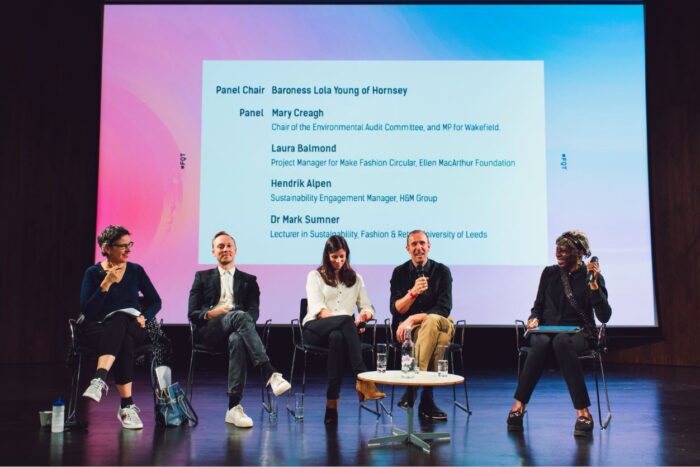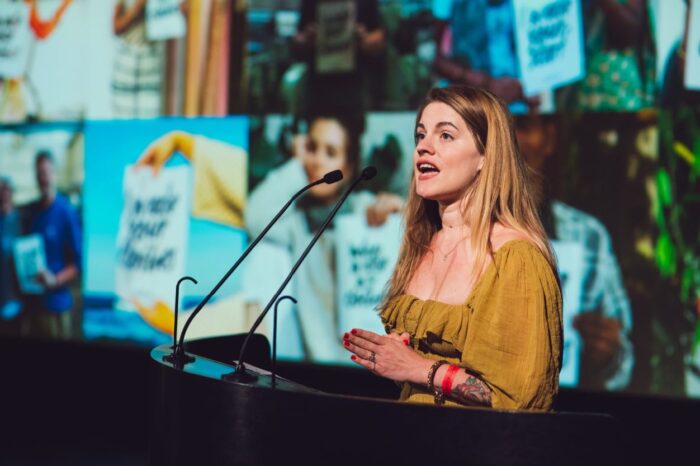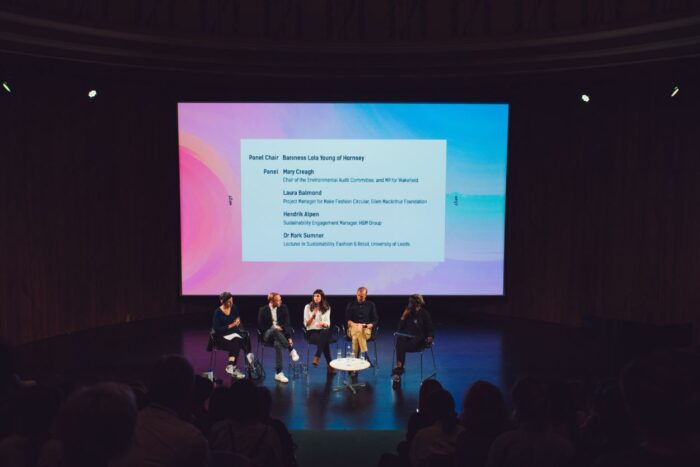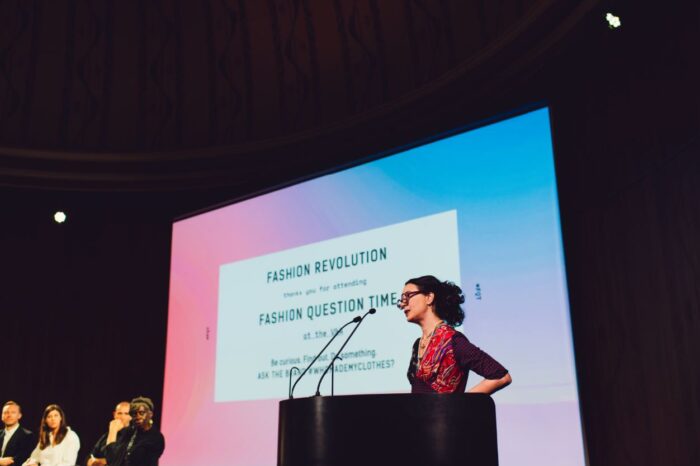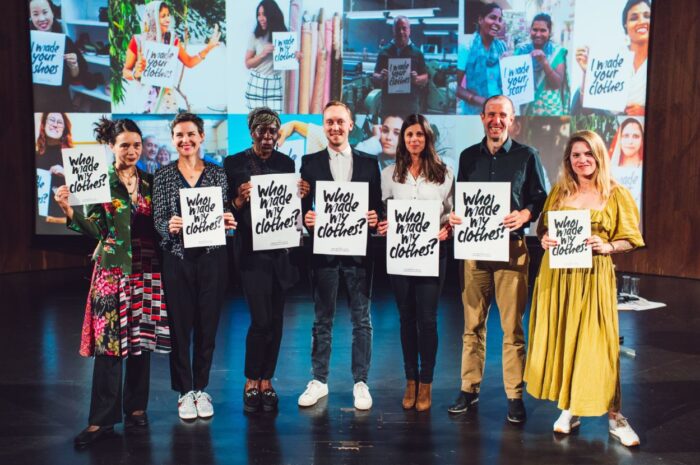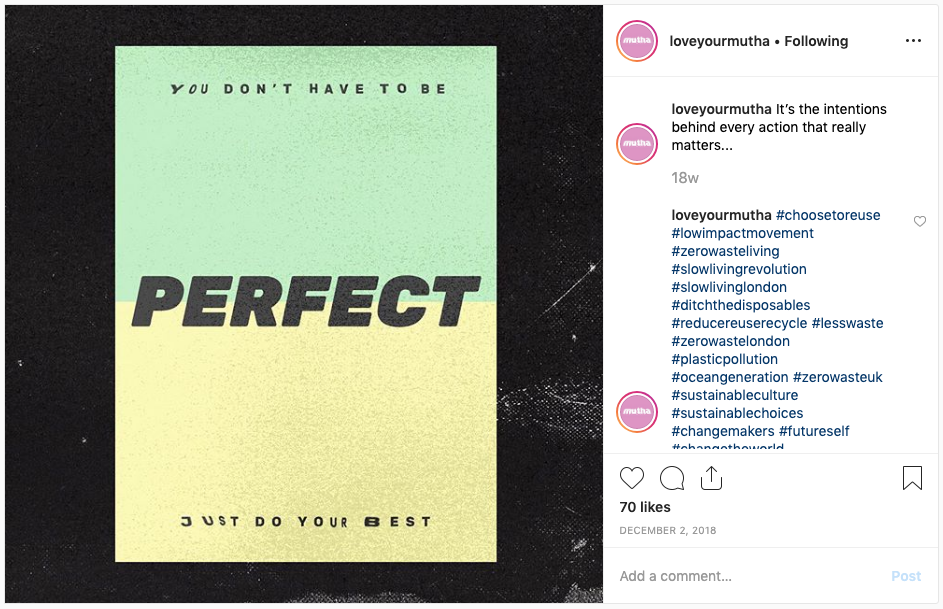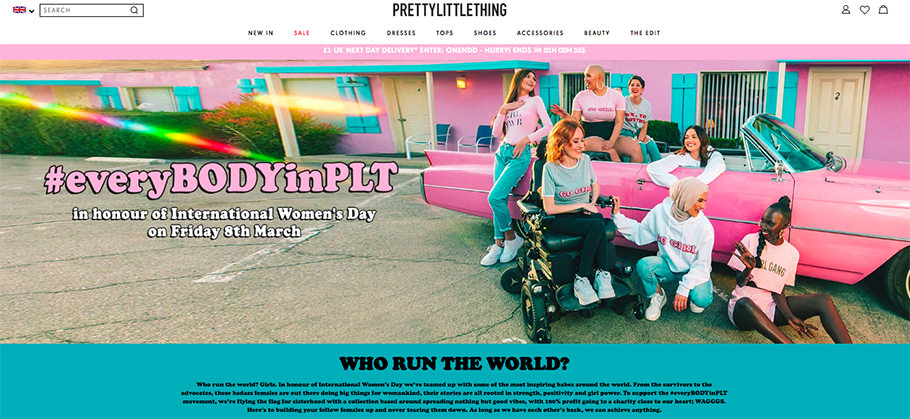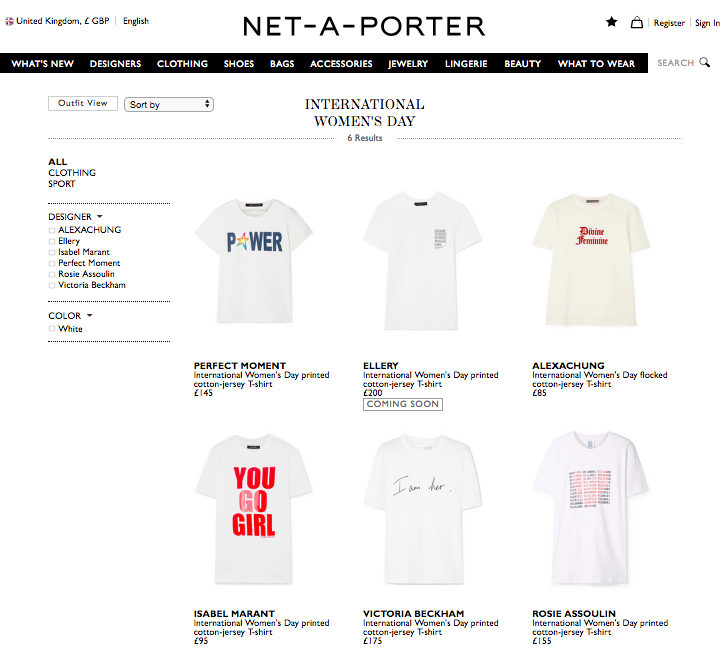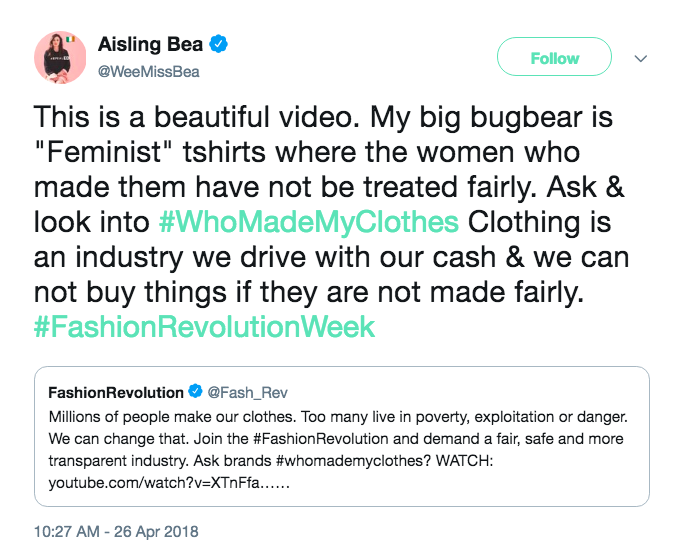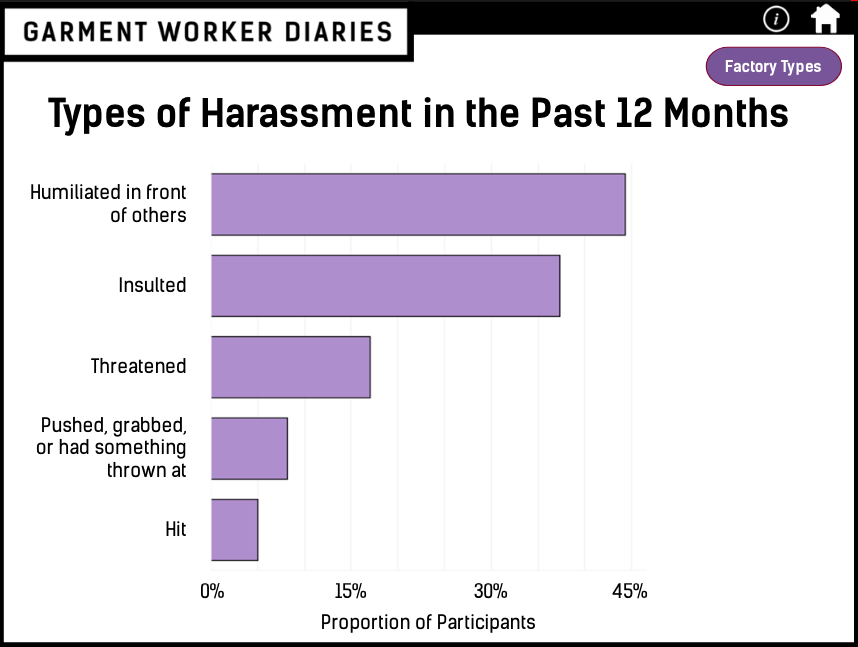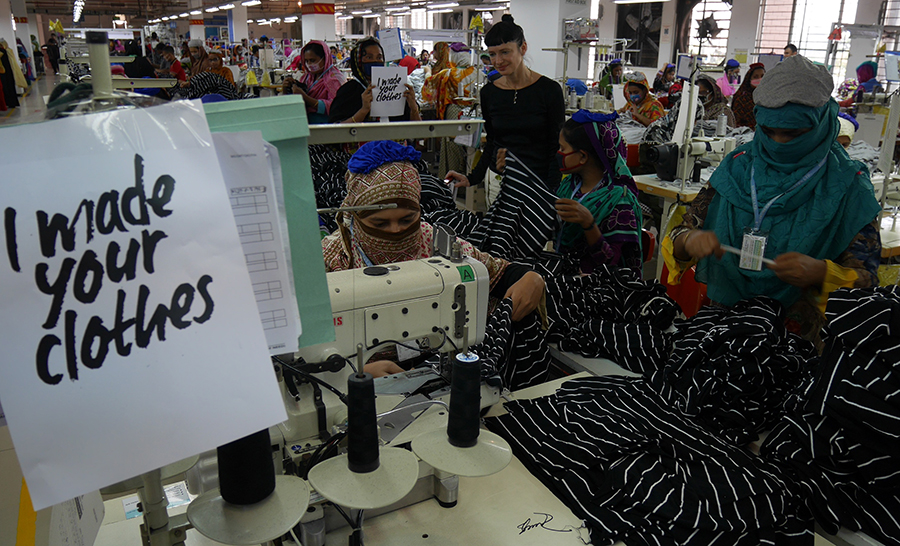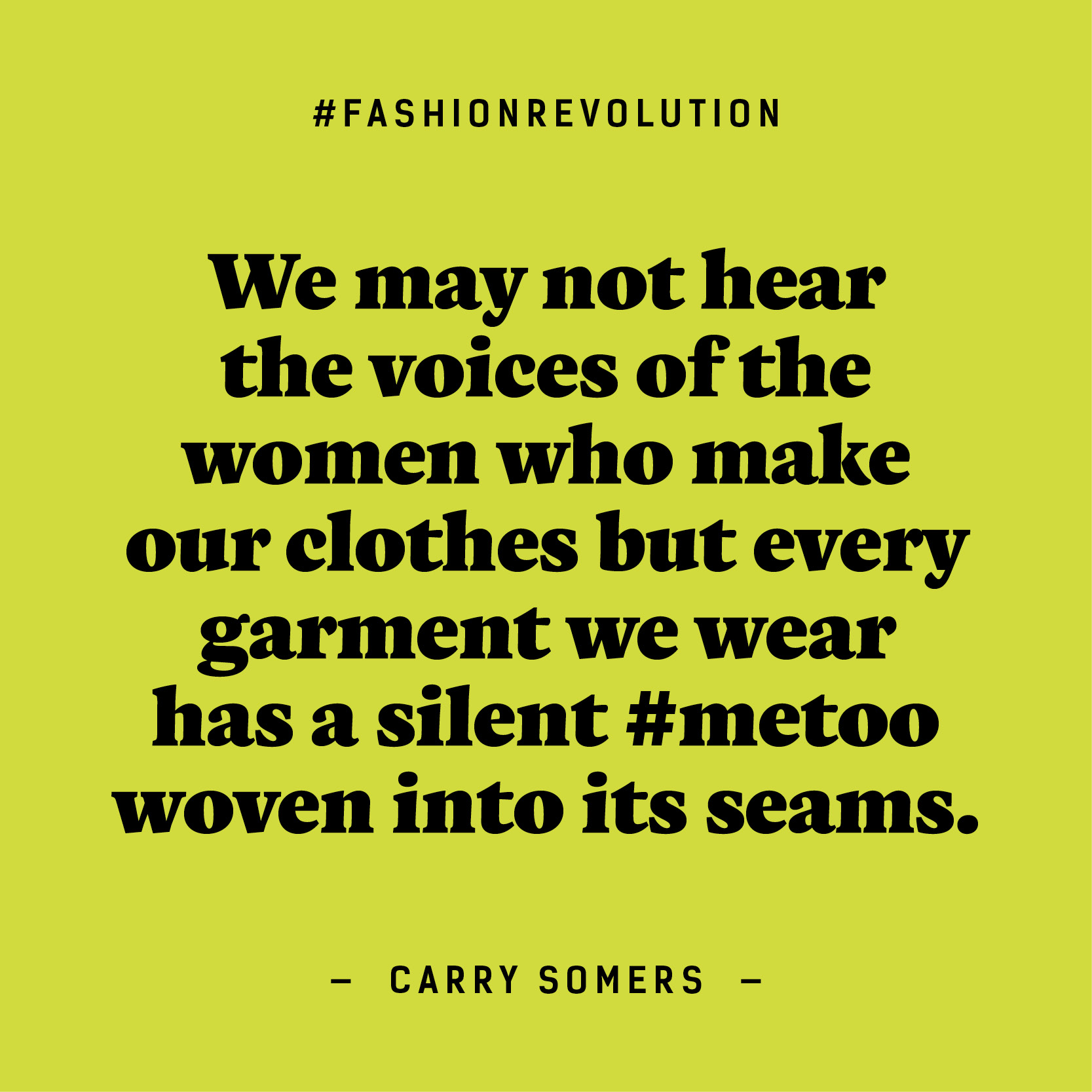La tercera edición del Fashion Revolution Day tuvo una importante acogida en territorio hispano. Miles de personas se sumaron al movimiento y demostraron que es posible una alternativa a la fast fashion.
El Fashion Revolution Day cumplió tres años y se celebró en más de 80 países en todo el mundo, con actividades y propuestas que tuvieron a la moda sostenible como eje central. España no fue la excepción: a lo largo del territorio se realizaron más de 18 eventos y participaron miles de personas; entre ellas, diseñadores, emprendedores, periodistas, estudiantes y público en general, que se interesaron por las actividades, algunos para difundir y otros para conocer qué hay detrás de la industria textil.
El Fashion Revolution Day es un movimiento que nació a partir del derrumbe del edificio Rana Plaza en Bangladesh, ocurrido el 24 de abril del 2013, donde se concentraban varias fábricas textiles que suministraban productos a cadenas internacionales de moda (varias de ellas españolas). La tragedia causó 1.134 muertos y más de 2.500 heridos.
La campaña nació de la mano de Carry Somers y Orsola de Castro y ya ha recorrido el mundo, buscando concienciar a las grandes marcas, a los incipientes diseñadores y al consumidor acerca de los costes irreversibles de la fast fashion.
Desde Madrid hasta Ibiza, España dijo presente a esta revolución pacífica y fue escenario de diversas actividades en torno a la consigna #QuiénHizoMiRopa.
MADRID
El fin de semana del 22, 23 y 24 de abril se llevó a cabo la V edición de la Jornada de Moda Sostenible, organizada por Slow fashion Next y el Museo del Traje de Madrid, en el marco del Fashion Revolution Day. El evento contó con la presencia de emprendedores, diseñadores y otras destacadas personalidades del ámbito de la moda y la sostenibilidad, tales como Javier Goyeneche, de la marca Ecoalf; Pilar Riaño, directora de Modaes; Maria Almazán, CEO de Latitude, Cora Belloto, diseñadora italiana premiada en Eco-chic Design Award, entre muchos otros.
A lo largo de la Jornada, participaron alrededor de 400 personas, quienes pudieron tomarse fotografías en el photocall de Fashion Revolution Day e interactuaron con los ponentes a través de las redes sociales y de un espacio de networking habilitado para la ocasión.
También hubo un showroom con marcas sostenibles donde no solo se expusieron productos orgánicos, sino que se les mostró a los interesados las diferencias entre la industria fast fashion y la slow fashion, con el propósito de concienciar y educar en un consumo responsable. Finalmente, el domingo 24 todos los asistentes se tomaron una fotografía con la consigna #WhoMadeMyClothes en las escaleras del Museo del Traje.
De manera paralela, la Asociación de Moda Sostenible Madrid instaló otro photocall en la Plaza Isabel II -Ópera y cientos de madrileños y turistas se acercaron a tomarse un selfie con las consignas de la campaña Fashion Revolution Day. Además, se dictaron talleres creativos, hubo una exposición de marcas sostenibles y se realizó un emotivo homenaje a las víctimas de la tragedia del Rana Plaza, ocurrido hace tres años.
BARCELONA
La ciudad catalana se ha sumado, por tercer año, a la conmemoración del Fashion Revolution Day. En una edición que ha puesto el foco en la importancia de la educación, la asociación Moda Sostenible Barcelona (MSBCN) ha impulsado Fashion Revolutionaries 2016, un concurso online para sensibilizar a la población sobre el impacto de la imperante industria del fast fashion.
Cientos de personas de toda España han puesto a prueba durante 10 días sus conocimientos sobre moda y sostenibilidad, respondiendo a los cuestionarios elaborados a partir de los materiales educativos creados por Fashion Revolution UK. Los ganadores, que se han llevado múltiples premios de moda sostenible cedidos por socios de MSBCN, se dieron a conocer el domingo, coincidiendo con el Fashion Revolution Day.
Paralelamente, la Campaña Ropa Limpia (Clean Clothes Campaign) de SETEM organizó un acto homenaje en recuerdo a las víctimas de la tragedia del Rana Plaza donde también participó Moda Sostenible Barcelona. El Museu del Diseño acogió la proyección del documental ‘The True Cost’ y un debate posterior con Josep Burgaya, autor de ‘La economía del absurdo’; Alba Trepat, de la campaña Cambia Tus Zapatos; Inés Tarradellas, del proyecto Vestiduras; Oriol Corbella, de la cooperativa Promoètic; y Sylvia Calvo, de MSBCN.
CANARIAS
La Fashion Revolution Week 2016 en Canarias tuvo un balance muy positivo. Además de la gran acogida en los medios de comunicación a nivel regional, se llevaron a cabo numerosos eventos, con especial foco en la educación y la comunidad de estudiantes. El coordinador regional Eduardo Croissier y todo el equipo de voluntarios han hecho posible numerosos encuentros en la isla de Gran Canaria, Tenerife, La Palma y Lanzarote, a través de los cuales se invitó a reflexionar sobre el consumo responsable y una moda más ética y sostenible.
Uno de los eventos más destacados se dio lugar en la Facultad de Bellas Artes, de la Universidad de La Laguna en Tenerife, donde se realizó una charla con el objeto de da a conocer la política actual en materia de gestión y reciclaje de material textil, el consumo responsable de moda y su visión para el futuro en el contexto de la comunidad universitaria; explorar claves sobre el sector de reciclaje del textil, la logística y la manera en que se regula este sector, y resaltar la importancia de conocer el impacto medioambiental derivado de la fabricación textil y en ese contexto, presentar y comprometerse con el movimiento internacional Fashion Revolution y el papel de los embajadores universitarios.
Asistieron personalidades de gran prestigio como el Vicerrector Relaciones con la Sociedad de la ULL, el Jefe del Servicio de Sostenibilidad del Cabildo de Tenerife, un representante del Centro Insular de la Calidad y el responsable de la empresa Canarias Recycling S.L. Se realizó, además, la presentación del Proyecto RECUTS, una iniciativa emprendedora local de la mano de una estudiante del CFIP Las Indias.
BILBAO
Bilbao acogió la exposición Slow Fashion, del 18 al 30 de abril, con la colaboración de Sustainable Week. La misma contó con la presencia de cinco marcas que diseñan y producen de forma responsable y cumplen con todos los estándares de calidad: Atakontu, Skuibo, Lynber, Skunfunk y Tytti Thusberg.
Atakontu es una marca que apuesta a la economía local, diseñando y estampando sus colecciones íntegramente en Bilbao. Por su parte, Lynber tiene una producción basada en la personalización en masa, por lo que las prendas se producen después de la compra. Skuibo realizan mochilas y bolsos, empleando neumáticos utilizados. Skunfunk en su colección Zero Waste ha modificado su forma de pensar y de diseñar, aprovechando el 100% de la tela, sin crear desperdicios. Por último, Tytti Thusberg es una diseñadora que realiza todas sus colecciones con materiales reciclados.
El público participó también en las redes sociales y el evento tuvo cobertura en importantes medios.
LA RIOJA
Moda Sostenible La Rioja realizó tres actividades en la semana de Fashion Revolution Spain con el objetivo de dar a conocer la moda sostenible a nivel local y reflexionar junto con el consumidor en torno a la pregunta: ¿Sabes quién hace mi ropa?
El 21 de abril se llevó a cabo la charla “¿Que es la Moda Sostenible?”, en la Escuela Superior de Diseño de La Rioja, en la que estuvieron las ponentes Silvia Muñoz (AMSA) y Garbiñe Tolosa (Maripuri Tijeritas). El 23 de abril se desarrolló la Pop Up de Marcas de Moda Sostenible, en el Café Maravillas, y el día 24 se desarrolló el Mercadillo 2ª Mano, en el Teatro CNT Artes Escénicas.
Esta fue la primera vez que La Rioja participa del Fashion Revolution, por lo que la convocatoria fue todo un éxito, en cuanto al número de colaboradores, patrocinadores y participantes de las actividades propuestas. Desde Moda Sostenible La Rioja se aseguró que se continuará trabajando para dar a conocer estas iniciativas y para que los consumidores ejerzan un consumo responsable.
VALLADOLID
El viernes 22 de abril los alumnos de ESI Valladolid a través de la acción “Show your label” lanzaron la pregunta en sus redes sociales “¿Quién hizo mi ropa?” frente al photocall instalado en la Escuela.
Por la tarde, durante el “Cluster Around Design” el diseñador de Moda Ulises Mérida señaló la importancia de conocer todo el proceso de producción, ser respetuoso y crear de manera sostenible para las personas y el planeta. El 25 y 26 de abril Ruta Kronenberga realizó los workshop “Upcycling” y “Cómo comunicar Moda sostenible” en el que invitó a los alumnos a reflexionar y experimentar de manera diferente, conscientes del compromiso de los diseñadores con el planeta y la sociedad. Estas acciones han tenido gran repercusión entre la gente y en medios locales y especializados.
Por otro lado, El 9 y el 10 de Abril, grupos scouts de Castilla y León se reunieron en el XXVII Festival Regional de la canción Scout el en Laguna de Duero (Valladolid) y participaron de un photocall del Fashion Revolution Day. Voluntarios de la campaña que aboga por una moda sostenible animaron a los scouts a participar del movimiento y a tomarse selfies, interrogando a las marcas con la consigna “#QuiénHizoMiRopa, a través de redes sociales.
Además, se elaboró un stand interactivo con material informativo, a través del cual se hizo hincapié en las pésimas condiciones de trabajo y de vida de los trabajadores de la industria textil y se habló acerca de consumo sostenible y justo.
BURGOS
La ciudad de Burgos estuvo presente en la Fashion Revolution Week con iniciativas propuestas desde la Escuela de Arte de Burgos y, en particular, de la mano de un grupo de alumnos de Enseñanzas Artísticas Superiores de Diseño de Moda.
La semana de moda sostenible contó con actividades de lo más variadas, desde charlas sobre consumo responsable, a través de las cuales se buscó concienciar acerca de las condiciones de explotación que sufren muchos trabajadores textiles; hasta intervenciones gráficas en las paredes de la institución. Además, hubo exposiciones de moda, un photocall para que los estudiantes se tomaran fotografías con la consigna #QuiénHizoMiRopa, un truque de ropa, donde se pudo entregar ropa e intercambiarla por otra, o donarla a Cáritas.
Las actividades continuarán hasta mayo, mes en el que se realizará una exposición donde se creará una obra de gran formato, a partir de las fotografías tomadas en el photocall.
LEÓN
León se sumó, por primera vez, a los actos de la Fashion Revolution. En este contexto, la Escuela de Moda LIPER fue la plataforma oficial del movimiento en la provincia y organizó dos actos. Por un lado, el 19 de abril tuvo lugar una concentración en la Plaza de Botines, en la que los participantes vistieron ropa negra y debajo otra de color y realizaron una intervención fotográfica, con el objetivo de promover la industria de moda responsable y sostenible.
Por el otro, el día 21, el Palacio del Conde Luna acogió una mesa redonda en la que se debatió sobre la producción justa y sostenible y los retos para alcanzar la transparencia en la industria textil. El evento contó con la participación de María Jesús Muñíz (periodista del Diario de León), Paula Hevia (directora creativa de la firma Mogüi, MariaTeresa Morán (diseñadora de moda El Taller De Mariateresa) y Sonia Pacho (alumna de la Escuela de Moda LIPER con su sello “Kosicas y Telares”). Además, se proyectó el trailer del documental ‘The true cost’, de Andrew Morgan.
Finalmente, se propuso al público realizarse un selfie con el lema #QuiénHizoMiRopa y se seleccionaron las más originales y sus autores se llevaron un fabuloso premio. Desde lGuía Go León llevaron esta propuesta a portada, ayudando a los participantes con el cartel de la consigna de campaña.
IBIZA
La isla se sumó por primera vez al movimiento Fashion Revolution Day, para promover el uso y el consumo de moda justa y ecológicamente sostenible. La jornada la organizó por Etikology con el Consell de eivissa.
Los creadores textiles demostraron no solo que es posible hacer diseños de calidad y sostenibles sino que esta opción está muy cerca del consumidor ibicenco, ya que la mayoría de las marcas se fabrican en Ibiza o se distribuyen en la isla.
Entre las actividades propuestas, se colocó un gran mapa del mundo en mitad de la plaza con pegatinas acumuladas en China, Bangladesh e India, para invitar al visitante a revisar las etiquetas de su ropa, descubrir las condiciones de su fabricación y sumar su pegatina. Todo esto con el objeto de visualizar dónde se centraliza la producción textil del mundo.
Por otro lado, la Fundación Deixalles, que recupera prendas de segunda mano, realizó una exposición donde mostró la composición de la ropa y explicó qué hay detrás de los tejidos.
Además de moda, la jornada también acercó al público productos como las copas menstruales, cosmética natural y varias propuestas culinarias autóctonas y ecológicas. Al mediodía se sirvió una paella vegetariana preparada con ingredientes provenientes de cultivos orgánicos locales.
Las actividades culminaron con un desfile de moda con marcas sostenibles, como Organic Cotton Colours, Etikology, Ibiza Republic, Rupit Mallorca, Andrea Verdura, Dreams Artisans, Recitrans, Merit Orlando y Ibiza Piel.
MÁLAGA
El 23 de abril se montó un photocall en el concept store de Veganized – non toxic fashion, en Málaga, donde participaron más de cien personas a largo de todo el día. El evento contó con la colaboración de NEHCAA Jewelry (Joyería Sostenible) y la Asociación de Moda Sostenible de Andalucía (AMSA).
En el marco de esta actividad surgió un espacio de networking y se recogieron etiquetas “Made in Bangladesh” con el propósito de coser una bandera para homenajear a las víctimas de la tragedia en Rana Plaza.
Además, dos artistas, Debora Cano de Manifesto Eco y Juan PE, interpretaron un poema en la calle que trataba temas vinculados al Fashion Revolution.
JAÉN
Jaén se ha sumado por tercer año consecutivo al movimiento, con una completa programación de actividades organizadas por cuatro emprendedoras de la industria textil de la provincia.
A lo largo de tres días se celebraron diversos eventos con gran acogida de público y amplia cobertura por parte de los medios de comunicación locales. Se realizaron charlas en centros educativos y un taller con los alumnos de diseño gráfico de la Escuela de Arte José Nogué. Además, se llevó a cabo una charla abierta al público en la Universidad Popular Municipal y se proyectó el documental “Las costuras de la piel”.
El evento central de la programación se celebró durante el sábado con un showroom de marcas locales, un taller de reciclaje de camisetas y música en directo, entre otras cosas.
COSO DE JEREZ
El sábado 23 de abril se llevó a cabo la presentación del Fashion Revolution Day en Coso de Jerez. En la misma hubo un photocall donde los asistentes pudieron tomarse fotografías alusivas a la campaña. Esta parte del evento contó con las presencias de Reyes Pérez, de UAI Design, y Belén Mássia, Vegan Personal Shopper.
Por la tarde hubo una Spring Swap Party, una fiesta de intercambio de ropa, que tuvo una importante participación de la gente. Es la tercera vez que se realiza este tipo de actividades en la localidad, lo cual demuestra que tales prácticas de consumo reúnen cada vez más adeptos.
También se presentaron los nuevos looks de verano de UAI Design y miropavintage.com, en un desfile de gran convocatoria. El cierre de la jornada estuvo marcado por la actuación de la banda Wonderwall, que brindó un concierto musical en directo, con repertorio de los ’60, ’70 y ‘80s.
EXTREMADURA
Desde Extremadura, la propuesta estuvo centrada en la difusión de la filosofía y los fines que persigue el Fashion Revolution. Para ello, se realizó un vídeo en el que no solo se da a conocer el movimiento sino también se buscó que los extremeños se sintieran identificados e involucrados con la causa. El vídeo se rodó en la localidad de Cáceres y se difundió en medios de comunicación locales y a través de las redes sociales.
El Fashion Revolution Day también contó con intervenciones y participaciones provenientes de Murcia, Vigo, Andorra, Sevilla y Teruel, entre otras ciudades; y de marcas sostenibles que apoyaron la campaña con acciones específicas como Art and Seams, que se sumó a la campaña del Fashion Revolution Day y lanzó un vídeo donde invita a bailar por la “revolución pacífica”, en busca de una moda respetuosa con el trabajador y con el medio ambiente.
Se acerca el mes de abril y también la Fashion Revolution Week – la campaña mundial anual que reclama una industria de la moda que valore a las personas y al planeta por encima del crecimiento y las ganancias – que se llevará a cabo del lunes 19 al domingo 25 de abril de 2021.
Este año, pedimos a la industria de la moda y a los gobiernos que reconozcan la relación entre los derechos humanos y los derechos de la naturaleza. Creemos en la necesidad de realizar un cambio radical en nuestras relaciones – entre nosotros, con nuestra ropa, dentro de las cadenas de suministro de moda y con el mundo natural – para que los derechos de las personas y los derechos de la naturaleza sean más importantes.
EL PROBLEMA
Dado que se prevé que la producción de prendas crecerá en un 81% hasta 2030*, existe una demanda cada vez mayor de tierras agrícolas para producir algodón, viscosa, lana, caucho, cuero y otras fibras naturales. Cada año se talan 150 millones de árboles para convertirlos en tejidos como viscosa. La deforestación causa la pérdida de hábitat y aumenta el riesgo de transmisión de enfermedades de la vida silvestre a los humanos, mientras las personas que trabajan para fabricar nuestra ropa en condiciones de explotación sigue arriesgando su salud en taller intensivos llamados Sweatshop donde las condiciones no permiten una correcta protección contra el virus incrementando las posibilidades de controlar la pandemias.
Algunas de las condiciones de trabajo más severas, explotadoras y con mayor riesgo ambiental ocurren en lo profundo de las cadenas de suministro de la moda, donde se cultivan materiales y se fabrican telas, como lo demuestran las recientes revelaciones del trabajo forzoso de los uigures en la región de Xinjiang en China. Ha llegado el momento de exigir un nivel más profundo de transparencia, para preguntar no solo #QuiénHizoMiRopa y #QueHayEnMiRopa sino #QuiénHizoMiTela y quién cultiva el algodón.
¿QUÉ SE PUEDE HACER?
Desde Fashion Revolution, haremos campaña por una revolución en el funcionamiento de la industria, por la salud de la tierra y los océanos, por nuestra propia prosperidad y bienestar. No podemos seguir extrayendo recursos cada vez más escasos de un mundo natural ya estresado, contaminar nuestra tierra y nuestros océanos, no alcanzar los objetivos del cambio climático, arrojar nuestros desechos sobre los hombros de países que hemos agotado culturalmente e ignorar la desigualdad y los abusos de los derechos humanos en todas partes de la industria.
ÚNETE A LA REVOLUCIÓN
Durante la semana del 19 al 25 de abril, te animamos a hacerte un selfie enseñando la etiqueta de tu prenda de ropa con los carteles Quién Hizo Mi Ropa y Que hay en mi ropa, compartirla en las redes sociales con los hashtags #QuienHizoMiRopa #QueHayEnMiRopa y etiquetándonos: @fash_revspain. Además, puedes participar de nuestros eventos que sucederán a lo largo de la semana.
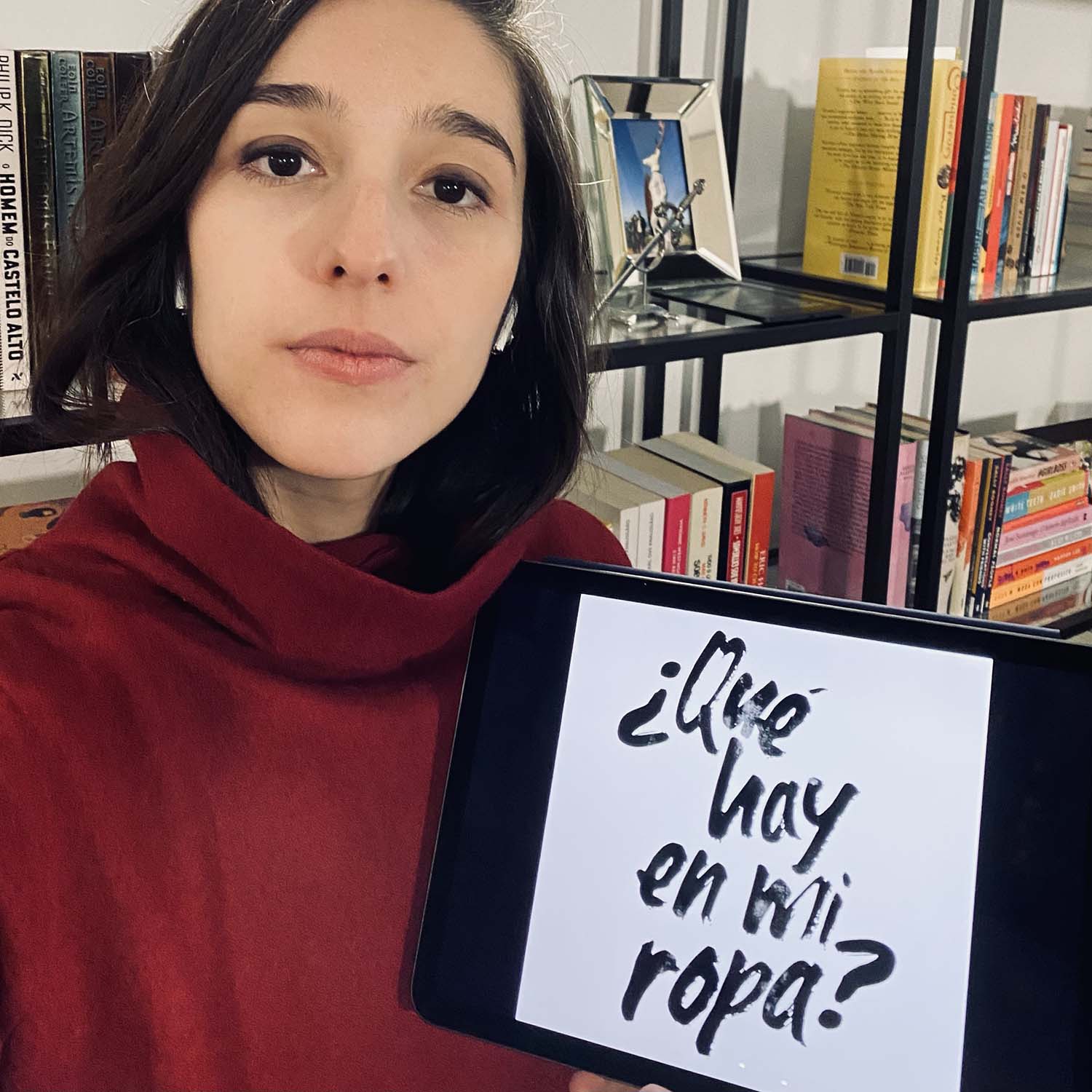
MÁS INFORMACIONES
La lista de los eventos saldrá unos días antes de la Fashion Revolution. Esté atento en nuestras redes.
Descarga los carteles: https://linktr.ee/fash_revspain
Redes Sociales: @fash_revspain #QuienHizoMiRopa #QuiénHizoMiTela #QueHayEnMiRopa #FashionRevolution #LovedClothesLast
La realidad es que la moda está cambiando y es fundamental que estos cambios tengan en cuenta la sostenibilidad y sus efectos duraderos. Globalmente consumimos alrededor de 80 mil millones de prendas nuevas cada año y muchas de ellas van al vertedero después de un período corto de uso. La moda sostenible ya no es una tendencia, sino una necesidad y comprender por qué la necesitamos es el primer paso para una revolución.
La sostenibilidad tiene en cuenta tres pilares indivisibles para garantizar que hoy podamos satisfacer nuestras necesidades sin comprometer a las generaciones futuras. Estos 3 pilares son:
SOCIAL
Para garantizar que los individuos tengan una vida bien mantenida y saludable además de que sus relaciones laborales tengan el objetivo de favorecer el desarrollo personal y colectivo.
MEDIOAMBIENTAL
Para buscar la preservación del medioambiente y reducir el daño causado por nosotros a lo largo del tiempo.
ECONÓMICO
Para aumentar el bienestar social a través de una reducción en la producción y en el consumo, con el apoyo de empresas verdes.
Equilibrar los ámbitos sociales, medioambientales y económicos es la clave para gestionar recursos en un planeta finito, garantizando bienestar social y desarrollo económico.
LA MODA Y LA SOSTENIBILIDAD
Los efectos dañinos de la acción humana ya empiezan a revelarse y la moda sostenible es una alternativa al sistema actual, que propone el uso racional de los recursos naturales, el consumo consciente que rechaza las compras por impulso y la circularidad de la producción. Además, garantiza el bienestar de los trabajadores y promueve el fin de la esclavitud moderna. Crear desde una visión holística y responsable hará que garanticemos una industria más justa para toda la cadena de producción y también para los consumidores.
Desde el punto de vista de la sociedad, estaría bien conocer mejor las marcas que nos gustan y ser curiosos sobre nuestras prendas. Por ejemplo, la campaña #QuienHizoMiRopa surgió de esta inquietud e invita a todos nosotros a preguntarnos y preguntar a las marcas quienes son los involucrados en la producción de nuestras prendas. Una acción sencilla que pone presión en las marcas para que sean más responsables con sus cadenas productivas.
Además, sería necesario disminuir nuestro ritmo de consumo y consumir con más responsabilidad, por ejemplo, preguntándonos si realmente necesitamos aquellas prendas que nos gustaría comprar en las rebajas. Buscar un equilibrio es el primer paso hacia la sostenibilidad.
SÉ CURIOSO, AVERIGUA Y ACTÚA
Desde Fashion Revolution nos proponemos ser un movimiento global de personas e instituciones que luchan por una mejor forma de producir y consumir moda, es decir, por una moda más sostenible. Amamos la moda pero sabemos que el sistema actual nos hace pagar un precio muy elevado por nuestras prendas.
Te invitamos a mirar el trailer subtitulado del documental The True Cost en nuestro canal de YouTube y a hacerte una selfie enseñando la etiqueta de una de tus prendas favoritas, con el cartel ¿Quién hizo mi ropa?
Tras una creciente demanda de recursos en un planeta finito, un aumento en la contaminación y en la explotación de los trabajadores, ha llegado el momento de la moda sostenible. Garantizando el equilibrio de los 3 pilares de la sostenibilidad: social, medioambiental y económico, garantizamos nuestro presente y futuro. ¡Súmate a esta revolución!
Mens verden er gået lockdown, og de fleste af os er gået i fælles isolation, fokuserer vi hos Fashion Revolution på, hvordan pandemisituationen påvirker de millioner af mennesker, som laver vores tøj. Mange butikker rundt om i verden er lukket ned og opfordrer i stedet for til at shoppe online. Denne her tid gør os usikre på den økonomiske fremtid, og derfor stimulerer det ikke ligefrem købelysten til at shoppe nyt tøj.
For os modeaktivister kan omstændigheder forhåbentlig medføre, at vores #Lovedclotheslast bevægelse, som vi har kæmpet for i flere år, kommer til at fylde mere – både nu og på den anden side af Corona-krisen. Produktionen af fast fashion har været voldsomt stigende de senere år og fortsætter kun derudaf. Der bliver produceret for 150 milliarder beklædning om året, hvilket tærer på vores klode og miljø, og tøjindustrien udleder mere CO2 end fly- og skibsindustrien tilsammen. Det kan ikke fortsætte, hvis vi skal holde os under de 2 plusgrader, som forskere verden over har bedt os om. Netop Fashion Revolution Week 2020 handler om at forlænge tøjets levetid og nedsætte hastigheden af vores modesystem. Som noget nyt spørger vi også #whatsinmyclothes? for at afdække de skadelige stoffer i vores tøj, og vi opfordrer til at gå på opdagelse i klædeskabet og finde ud af mere om de materialer, som vores tøj er lavet af. Vi fortsætter også med at spørge #whomademyclothes?, og fokuserer på lønningerne og forholdene for tekstilarbejderne. Vi opfordrer også køberne til at bruge deres økonomiske magt og stemme, til at stille brands og politikere til ansvar og forbedre arbejdsforhold og foreningsfrihed for alle mennesker, der arbejder på tværs af tøjbrands leverandørkæder. For det er netop de mennesker, der er udsat for de største konsekvenser af den uventede Covid-19 pandemikrise.
Det er almindeligt i den globale modeindustri, at tøjbrands betaler flere uger efter levering snarere end ved bestilling. Det betyder, at deres leverandører normalt betaler forud for materialerne eller fibrene, der bruges, for at brands køber af dem. Som svar på pandemien annullerer mange store brands og forhandlere ordrer og stopper betalinger for allerede bestilte varer, selv når arbejdet allerede er blevet udført. De tager intet ansvar for den eftervirkning, det har for de mennesker, der arbejder i deres forsyningskæder. Fabrikker har ikke andet valg end at ødelægge eller holde på de uønskede varer, der allerede er fremstillet, og afskedige deres arbejdere i hopetal.
På grund af coronavirus udbruddet, er der nu 1089 beklædningsfabrikker i Bangladesh, som er blevet påvirket af aflyste ordrer af en samlet en værdi af 1.5 milliarder dollars. Det fortæller en rapport fra Blomberg.
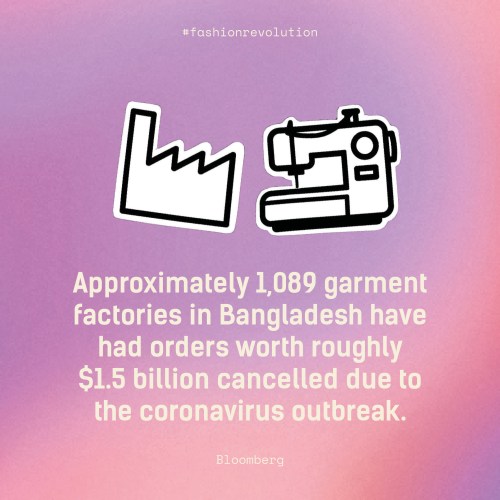
Pandemien gør, at en modeindustri, som allerede er i krise bliver ekstra udsat. Mere end 1 million beklædningsarbejdere i Bangladesh har allerede mistet deres job på grund af afbestillinger relateret til Covid-19, lyder det fra Center for Global Workers Rights.
Ifølge The AWAY Foundationer mange fabrikker i Bangladesh blevet lukket på ubestemt tid. Nogle arbejdere er blevet givet mindre end en månedsløn, som fratrædelsesgodtgørelse, og mange andre har slet ikke modtaget noget.
Nazma Aktor – Direktør for AWAY har forklaret: “at disse arbejdere ikke ved, hvordan de skal forsørge deres familie, hvordan de skal brødføde dem og betale for husleje samt andre nødvendigheder. De ved ikke engang, hvad de skal stille op, hvis de får brug for medicinsk behandling, hvis de får Coronavirus.”
Generaldirektøren for Den Internationale Arbejdsorganisation(ILO),Guy Ryder, beskriver den menneskelige dimension af pandemien som ødelæggende, og dens samlede sundhedsmæssige, sociale og økonomiske virkninger som den værste krise siden Anden Verdenskrig. Han tilføjer også, at krisen afslører den enorme mangel på anstændig arbejdskraft, som stadig hersker i 2020, og at den har vist, hvor sårbare millioner af arbejdende mennesker er, når sådan en krise rammer.
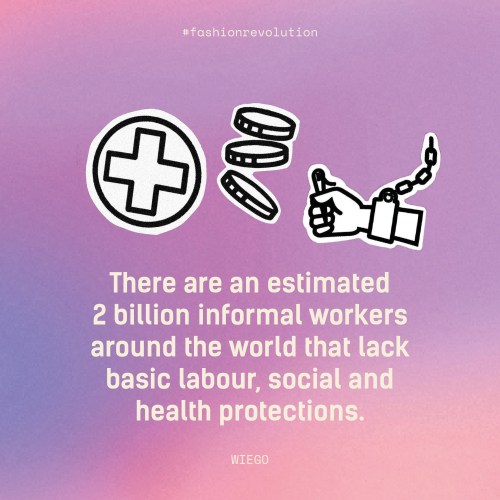
Mode bliver ikke kun skabt på fabrikker. Mode er også håndværk, kunsthåndværk og ting, der ofte bliver lavet i uformelle miljøer. I henhold til Artisan Alliance er håndværk den næststørste beskæftigelseskilde i udviklingslandene. WIEGOvurderer, at der er omkring to milliarder uformelle arbejdstagere overalt i verden, der mangler grundlæggende arbejds-, social- og sundhedsbeskyttelse. Som et resultat af COVID-19, der truer den globale handelsstrøm, står arbejderkooperativer, håndværksgrupper, lokale håndværksbaserede samfund, hjemmebaserede arbejdere, landbrugsarbejdere og landmænd over for fatale økonomiske forhold.
Fashion Revolution har altid forsøgt at være ærlige over for samfundet om de problemer, der skjuler sig i den globale modebranche. Efter at vi blev dannet som reaktion på den 3 største industrielle katastrofe i historien, nemligRana Plaza kollapset i 2013, hvor 1138 mennesker omkom og over 2000 blev hårdt såret, er vi ikke fremmede for udnyttelse og ulighed inden for branchen. Men vi har været og vil fortsat være fokuseret på løsninger og dedikeret til at finde måder at gøre en positiv forskel på. For os ligger et af svarene i vores manifest for en revolution af moden, og vi vil bruge de næste måneder (og år) på at mobilisere vores samfund til at gribe ind for at opbygge denne fremtidige mode.
Vores evne til empati styrkes af vores fælles globale erfaring, og selvom vi nu sidder indendørs, kan vi stadig bruge sociale medier til at gøre en forskel, især når vi taler sammen. Derfor beder vi vores globale samfund om at være mere aktive end nogensinde før. At spørge #WhoMadeMyClothes? og kræve, at modebrands beskytter arbejderne i deres forsyningskæde, ligesom de ville gøre med deres egne ansatte, især under denne hidtil usete globale sundheds- og økonomiske krise.

Hvis vi ikke gør noget nu, vil modebranchen vende tilbage til den sædvanlige forretningsmodel, når dette er over. Lad os i stedet antænde en revolution og opbygge et nyt system, der værdsætter menneskers og jordens velfærd frem for profit. Det betyder, at vi lige nu skal stå sammen for at beskytte og støtte de mennesker, der fremstiller vores tøj.
Det kan du gøre:
1. Send et brev til dine foretrukne modebrand og kræv, at de overholder de ordrer, de allerede har lagt hos deres leverandører, og sørg for at arbejderne, der fremstiller deres produkter, er beskyttet, understøttet og betalt korrekt under denne krise. Vi har oprettet en template på vores hjemmeside her, hvor du hurtigt og nemt kan sende en mail til de store tøjmærker som vi har listet. Mailen er skrevet du skal blot indtaste din mail og vælge det brand du vil spørge?
2. Giv penge direkte til almennyttige organisationer, der yder støtte til tøjproducenter, der har mistet deres job. Vi anbefaler at give penge til:
AWAJ Foundation– En non-profit organisation, der er grundlagt og ledet af beklædningsarbejdere i Bangladesh, der yder støtte til over 740.000 arbejdere. Dette inkluderer retshjælp, sundhedsydelser, organisation af fagforeninger, uddannelse af arbejdstagerrettigheder og industri og politik fortalervirksomhed. Donationer går direkte til arbejdstagere, der har mistet deres job. Dette vil hovedsageligt være i form af kontantudbetalinger for at sikre, at deres grundlæggende behov for mad og husly bliver opfyldt. Hvis du ønsker at yde et bidrag, så skriv til wagj@dhaka.net.
GoodWeave International– En non-profit organisation, der arbejder for at stoppe tvangsarbejde og børnearbejde i globale forsyningskæder. De har lanceret COVID-19 børne- og arbejdstagerbeskyttelsesfond for at levere øjeblikkelig humanitær hjælp og tjenester til sårbare befolkninger i Indien, Nepal og Afghanistan. de indsamler penge og betaler for levering af mad og ressourcer til arbejdstagere og deres børn. Doner her.
The World Fair Trade Organisation (WFTO)har lanceret #StayHomeLiveFair-kampagnen til støtte for sit globale netværk af arbejdere, landmænd, kunsthåndværkere og samfund under krisen. Du kan støtte ved at besøge deres webshop og støtte deres medlemmers crowdfunding-indsats. Støt her
CARE, den globale NGO for social retfærdighed, har arbejdet i beklædningsindustrien i over 20 år og fokuserer på at beskytte og støtte kvinders og pigers rettigheder og behov under pandemien. CARE’s Emergency Surge Fund matcher alle donationer og bruger midler til hurtigst muligt at give familier hygiejniske masker, håndvaskestationer og hygiejnesæt. Doner her.
3. BE CURIOUS FIND OUT DO SOMETHING
Forhold dig nysgerrigt og spørg #whomademyclothes #whatsinmyclothes
Gå på opdagelse i dit klædeskab, kig på dine labels og undersøg dine tøjbrands hjemmesider, for at se hvad de fortæller dig om, hvordan de har produceret dit tøj!
Vi opfordrer stadig til, at man forlænger levetiden af sit tøj. Ved at fordoble en t-shirts levetid har du sparet 44% CO2. Så vask på få grader, reparer dit tøj, når det går i stykker, og byt eller sælg det, når det endelig skal videre og køb genbrug. Stil krav til virksomhederne, så de gentænker deres strukturer, implementerer bæredygtige praksisser og kommer ned i hastighed. Vi opfordrer til, at man laver kærlighedshistorier på nettet om sit tøj eller en #haulternative, som betyder, at man viser frem på sine sociale medier, hvad man allerede har af tøj i sit klædeskab, og hvordan man kan style det på nye måder. Brug ekstra tid på din garderobe, kreer noget ud af tøjrester og reparer det du har, hvis det er gået i stykker.
Når du kigger efter nyt tøj så gå efter de små, bæredygtige brands. De har som regel mere kontrol med deres leverandørkæder end de store kæder, som har lange og komplicerede forsyningskæder, der er svære at gennemskue. Men hold øje med hvad brandet selv fortæller. Desuden er GOTS certifikatet et mærke, der både garanterer ordentlige miljø og sociale forhold i en produktion. Så det er også værd at kigge efter om tøjet har det mærke.
Følg vores organisation OG elsk jeres tøj meget mere.
There are three things I have been passionate about over the course of my life: sailing and the sea, the indigenous cultures of South and Central America, and creating a more sustainable fashion industry.
Working with Pachacuti, the hat brand I founded over two decades ago, and at Fashion Revolution over the past six years, has brought together the latter two areas in many ways, but now I am incredibly excited to be able to draw all three of these strands together. In February and March 2020, I will be setting sail with eXXpedition to investigate plastic pollution and toxics in our oceans. Almost 10,000 women from around the world applied to take part in the two year voyage and I feel incredibly fortunate to have been selected to crew on the leg from the Galapagos to Easter Island.
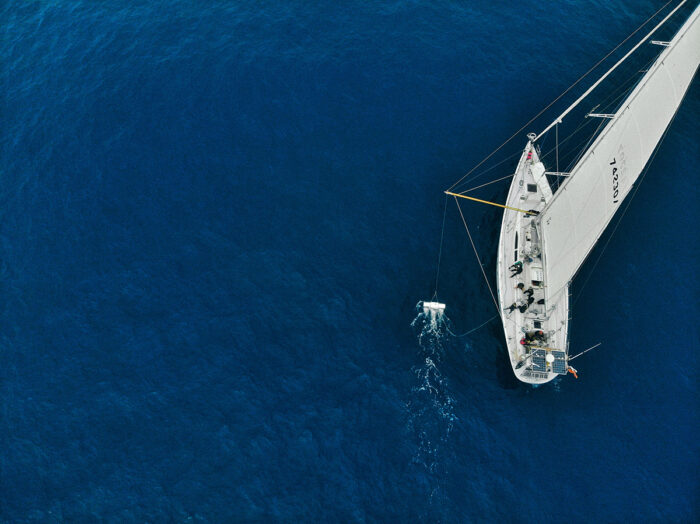
I learnt to sale on the magnificent J-Class yacht Velsheda in the late ’80s and spent a few summers as crew before jumping over to the square rigged brig TS Astrid on which I spent many happy months sailing the Channel and taking part in the Tall Ships Race. I then worked on various boats in the Caribbean for a year and sailed across the Atlantic on the tops’l schooner TS Unicorn. I remember night after night on the seemingly pristine sea watching the glowing, glittering phosphorescence resulting from the bioluminescence of organisms in the surface layers of the sea (we took two months crossing the Atlantic so there were plenty of sea sparkle nights to enjoy!) I never imagined that I would be sailing the oceans again three decades later to carry out research into the degradation of the marine environment.
My Masters in Native American Studies at the University of Essex was the culmination of an interest in the Andean region which stemmed from somewhere far back in my childhood – I remember asking for a picture book about the Incas as a Christmas present one year when I was still quite young. I immersed myself in learning about indigenous cultures past and present and would have continued with my PhD on the symbolism of colour and natural dyes in the Andes. However, having set up Pachacuti in the summer holidays and seen at first hand the real difference fair trade could make to textile-producing communities in Ecuador, I decided to turn my interest in the region to more practical use.
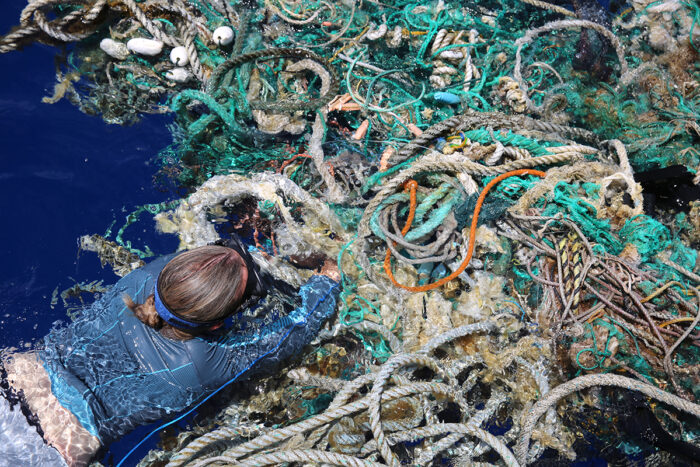
One of the key concepts of the Andean worldview is ayni, meaning reciprocity and balance. Balance does not mean just a static equibrium; the Inca strived for the creation of an animated cosmos through a system of continual exchange based on mutual respect, justice, and solidarity. They saw reciprocity as the foundation for peace, resilience and enduring relationships with our environment and our community both near and far. Ayni was a continuous accompaniment to life in the Andes and the foundation on which society was based. Indeed, life itself can be seen as ayni.
If the equilibrium between communities and the natural world was altered, it could result in floods, or lack of rains. Andean peoples understood that ayni has to be recreated every day in order for regeneration to take place and, as a result, knew that they needed to give things up, to make sacrifices to restore balance. Reciprocity moves people beyond self interest in order to do something for the common good.
Perhaps it is not surprising that in 2008, Ecuador became the first country to legally recognise the rights of nature and two years later Bolivia adopted the Law of the Rights of Mother Earth. This means in practice that people can now sue on behalf of the ecosystem. The Ecuadorian Constitution says this will help to “achieve the good way of living, the sumac kawsay.” Nature is part of the social fabric of life, not a resource to be exploited. The Andean concept of good living or living well doesn’t mean living better than others, nor does it imply the accumulation of material wealth. It means living well together, with nature, with mutual support, with ayni.
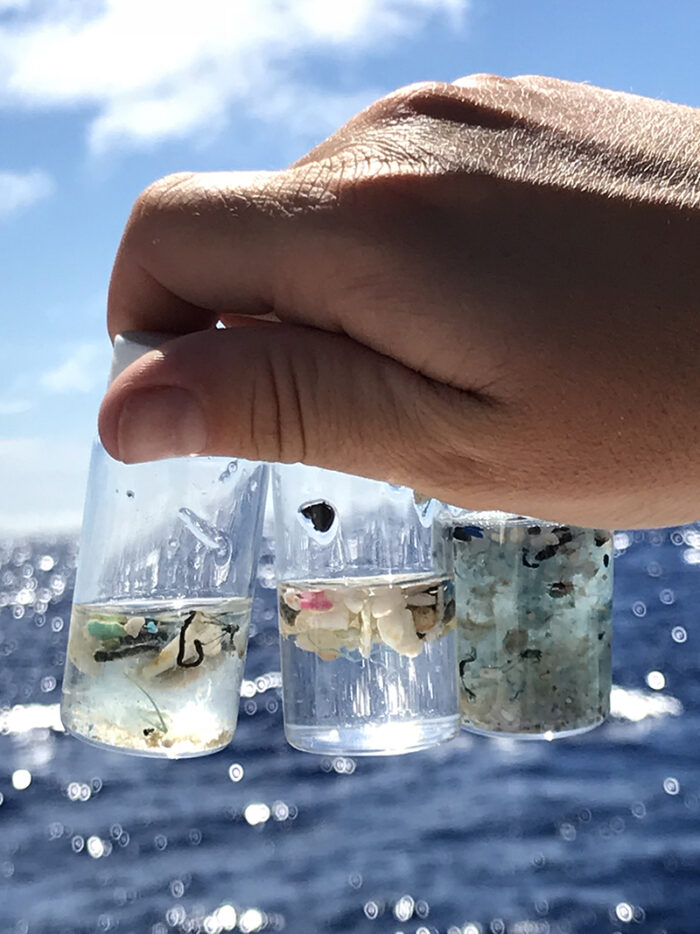
I was reminded of this whilst on holiday this summer, in a chalet by the sea on Branscombe beach in Devon. I was working there with my daughter, Sienna, and we were discussing stakeholders for Fashion Revolution’s policy dialogue toolkits. She told me that we must make sure we include stakeholders who don’t have a voice like the ocean and marine life. It seemed so obvious once she said it and I was astonished I had never previously thought of including them. This just emphasised to me how far we have become detached from seeing our world as a living being.
Reciprocity is inherent in the way the earth works, although there are limits that are difficult to reverse once they are crossed, as set out in the UN United in Science report issued on 22 September. Our activities, our pollution, our degradation of the marine environment are stressing the earth’s natural capacity for reciprocity. If we are to tackle toxics and plastic pollution in our oceans, as well as climate change, waste, and the myriad other environmental issues relating to the fashion industry, we know that every choice and every action matters. If we want to see regeneration of our waterways and oceans which are essential for living well on this planet together, we need to take co-operative responsibility. The resources of both land and sea are a gift, and this gift requires reciprocity in order to maintain healthy ecosystems.
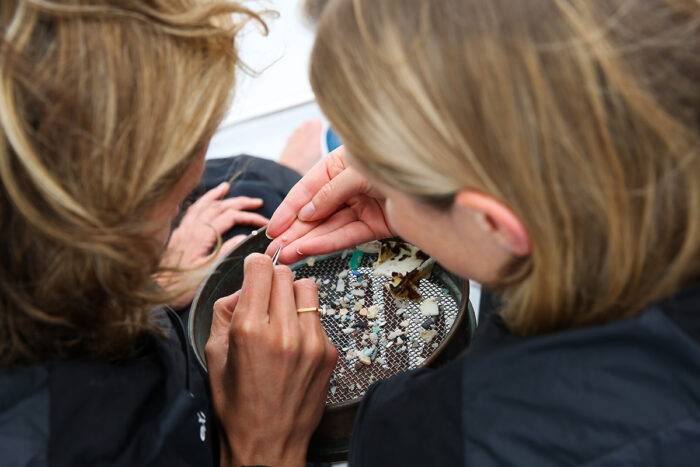
When I join eXXpedition and sail some 2000 miles through the Pacific Ocean, I will be taking part in groundbreaking scientific research on board this floating laboratory to help build a comprehensive picture of the state of our seas. I will also be helping to unravel how we got into this mess and how we can help shift our mindsets towards a more sustainable, a more balanced, future which encourages progress to a more regenerative system. The worldview of the peoples who inhabit the countries past which I will be sailing may well help us to find some of these solutions.
***
The eXXpedition Round the World voyage, which sets sail from Plymouth, UK on October 8th 2019, will sail through some of the most important and diverse marine environments on the planet. This includes crossing four of the five oceanic gyres, where ocean plastic is known to accumulate, and the Arctic on board 73ft sailing vessel S.V. TravelEdge. Under the directorship of award winning ocean advocate Emily Penn, 300 women will join the research vessel as crew over 30 voyage legs to journey more than 38,000 nautical miles. Follow news and updates via #eXXpedition @exxpedition on Twitter / @exxpedition_ on Instagram /eXXpedition on Facebook
I am looking for sponsorship and donations towards my participation in this groundbreaking voyage. Please see more information here – I am very grateful for any support.
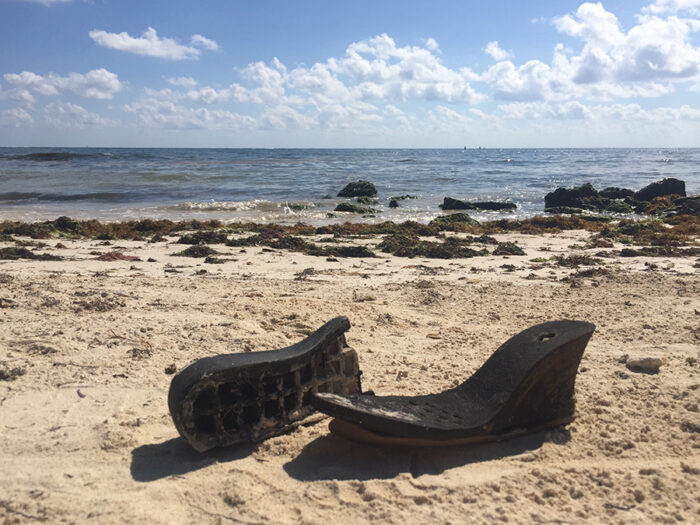
Header photo: Soraya Abdel Hadi/eXXpedition
This month’s Power of Influence takes us in a bit of a different direction. On a 15 minute walk from London Euston to London Kings Cross, Fashion Revolution co-founder Orsola de Castro and renowned fashion critic and columnist Sarah Mower spoke with Sara Arnold of Extinction Rebellion (and Higher Studio) about the recent protests, the aim of the movement and the next steps in their fight for climate justice. Shortly after this interview, the UK Parliament declared a climate change emergency.
A little bit of context: On Saturday April 27th, during Fashion Revolution Week and towards the end of Extinction Rebellion’s 2 week occupation of Central London, Slow Factory hosted “Study Hall: Sustainability as a Culture”. The event (in its first international edition) was held in London, UK. Before the event, the Fashion Revolution team along with Sara Arnold, Sarah Mower, speakers, attendees and supporters took a walk to discuss the current happenings.
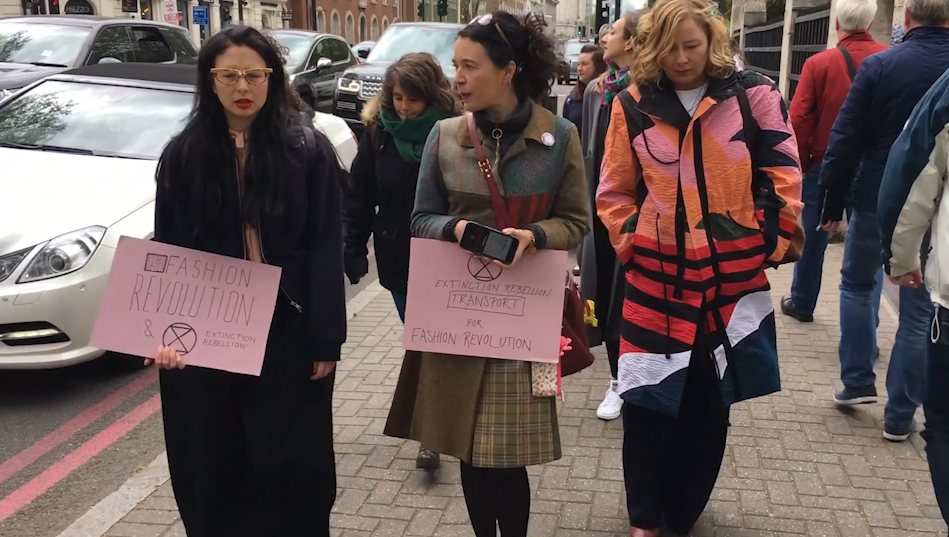
Here’s what was said:
Orsola de Castro: So the response to the protests… people are really prepared to put themselves out there. There were over 1000 arrests you say. Did you find that the overall response was positive?
SA: There has been criticism of the tactics used, there has been criticism of disruption, but that’s not we’re worried about. We want people to hear our demands, that’s what people should be focused on. I think we are making progress on that. Everyone is talking about climate change in a different way. Talking about it as an emergency. It doesn’t matter if they don’t agree with how we’ve gone about doing things. As long as it works.
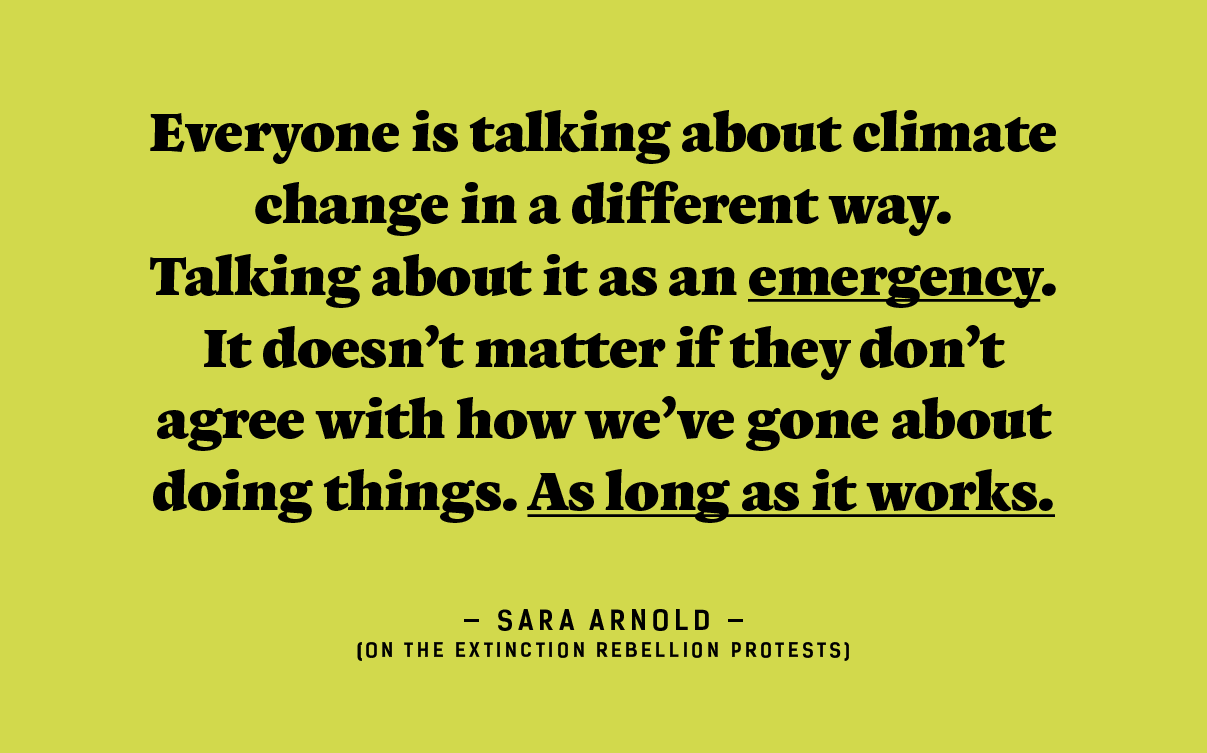
OdC: I’ve found that one of the reasons why we (Fashion Revolution) wanted to do this is the symbolism of joining hands. Even if everyone has a different way of doing things. The fact that the message is one of urgency is what we want to show. We need to all join together.
Could you tell me a little about how you guys started?
SA: Yes, so Extinction Rebellion were a group called Rising Up which started, in 2016, as a group of activists who wanted to theorise how they would go about creating this social change that we needed. They researched and put into practice different tactics. A member of Extinction Rebellion, Roger Hallam, who is currently doing his PhD at King’s College on these issues, one of the things he did was engage with an activist group at King’s that for years had been trying to get the University to disinvest from fossil fuel. They decided to stage a hunger strike. They were told that this process, even just the bureaucracy of disinvesting from fossil fuels would take a year to sort out. They said ‘okay, so let’s just try it’. So they went on hunger strike.
Sarah Mower: Because the university was investing in fossil fuels?
SA: Exactly. The whole process, from start to finish, from them going on hunger strike to all the investment coming out was 2 weeks. When they were told it would take years. So it just goes to show that direct action makes change. People do what they think is not possible when they are faced with disaster.
OdC: When I went to the first extinction rebellion meeting, you were talking about in war and in emergency, people make things happen. So the factories go from producing kitchenware to producing arms. When it is a state of emergency, historically, we’ve known citizens and organisations to take action pretty rapidly.
SA: Exactly. Now we have to get this declaration through to them so they can act.
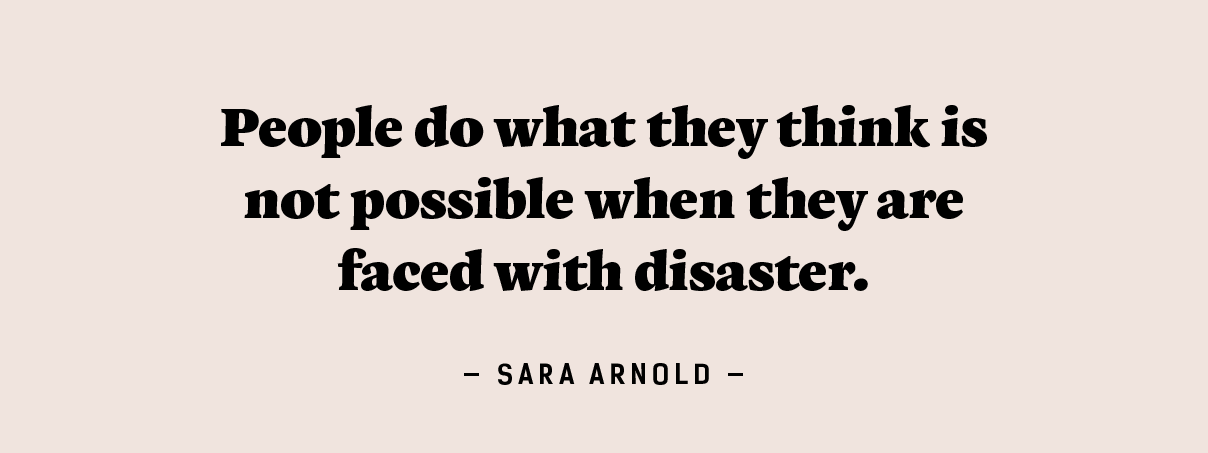
OdC: And so what about the involvement of Greta (Thunberg)?
SA: Greta was there when we held the Declaration of Rebellion on the 31st of October 2018. So we’ve had her support since the beginning. It’s really great that she came back at this time for the protests.
SM: She has changed everything.
OdC: She has changed everything.
OdC: You have other hubs in other countries, do you find there are other meaningful partnerships with local organisations in the rest of the world? Are you finding that people want to join you or do you find that they are hesitant to do so?
SA: The International Rebellion was in 33 countries. We have groups set up in 49 countries.
OdC: So like Fashion Revolution, you are de-centralised in the sense that it is volunteer run and people start their own groups.
SA: Yes. So we have 200 groups in the UK alone. The groups outside of the UK can have different demands to ours. They can adapt what we have done to respond to their own political situation. We’re so fortunate here to have police that are peaceful. And we have to use that privilege. We have a really engaged group in Ghana but if they did the same thing we are doing, they are looking at being arrested and then disappearing. It’s important for us to have solidarity with them. We keep a list of the names of those people so if anything does happen, we can protect them. It really interesting to get into that and see how we can help to take it further, internationally.
OdC: There are issues when you are a global group and you are dealing with law in different countries, even though the message is the same. Its important to recognise that.
OdC: How do you deal with citizens apathy out of fear? That people are so scared over what will happen, that they tend to go home and not know where to start.
SA: We need to really bring about this sense of urgency. That this is an absolute emergency. I feel its important to make people understand what the consequences are. We are talking about mass starvation, the death of billions of people if we reach a certain tipping point. Starvation is something we are really heading towards. We have 30 to 40 years left of fertile soil in this country, other countries are already hitting that. Let alone all the other problems. We are so dangerously close to hitting the tipping point.
Everyone is going to react to this differently. Everyone will go through a process of grief. And for a lot of people, grief will mean denial. That’s fine, you just have to feel compassion towards that. With extinction rebellion, what we are saying, is that when you give people the truth, a certain percent of the population, we think between 1 and 3% will rise up. And that is all we are aiming for. We need that 1 to 3% to rise up, to bring this to the governments and to take control.
OdC: And speak truth to power.
SA: Yes. We’ve been trying for the last 30 years to give people this positive message that we hope people will engage with and that great, but we don’t have time for that now.
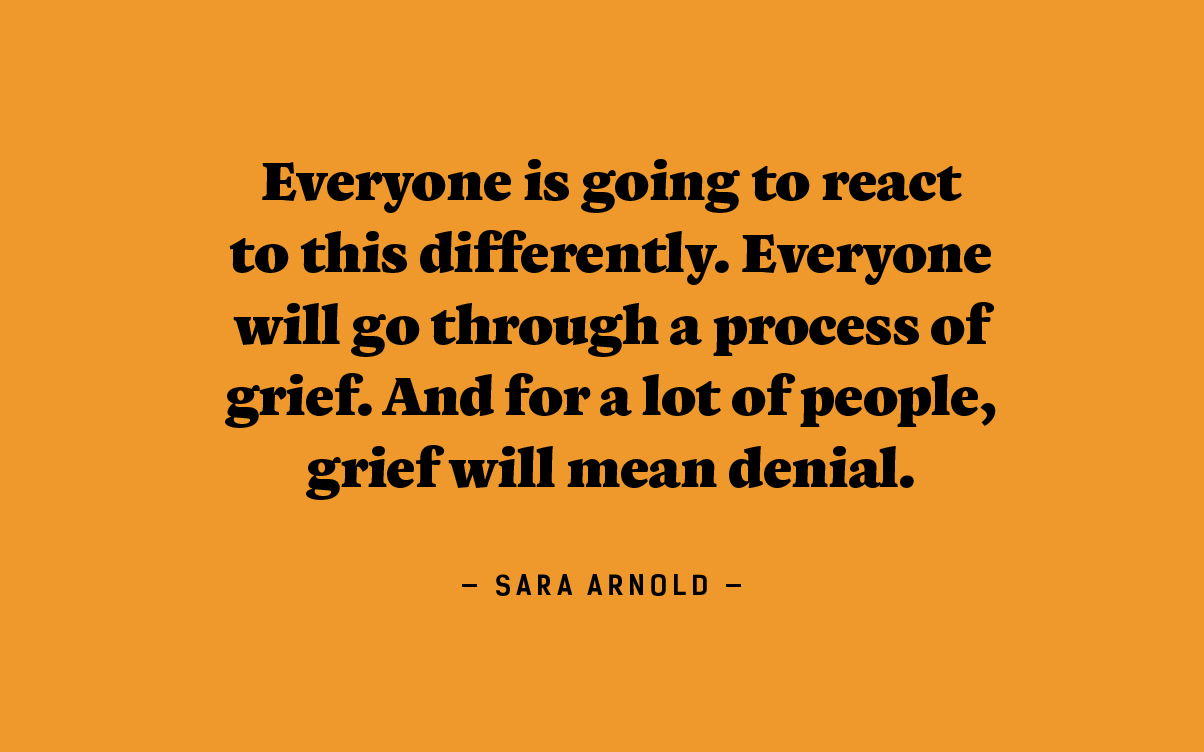
SM: So what do you think when Greta Thunberg stands in front of Michael Gove and he acts all Mea culpa. How do we hold him to account and get through real change?
SA: It’s a difficult question.
SM: If we’re talking about footfalls and governmental change.
SA: This is stage 1 of the rebellion. We can rise up and be bigger next time if we need to. I think. As we are doing that, we are waking people up to this emergency and its not something you can turn the clock back on. I think sooner or later the government will have to act.
OdC: I thought Mary Creagh was very honest at the recent Fashion Question Time when she was saying that we cannot do 2025 but working towards 2050, hoping it will gradually get faster and easier.
‘We aren’t going to get to net zero by 2025. The science will tell us what to do to get to net zero by 2050, and then in five years’ time to 2040 and then we’ll aim to get there for 2035. We have wasted the last 10 years, we’ve had no new policy in this country to change behaviour and we’ve done some policy mistakes along the way.’ Mary Creagh, Fashion Question Time at the V&A
SA: I think that we have to hit 2025. The Arctic is melting. We could lose it in a few years. That could be the tipping point that takes us into oblivion. We have to set our targets at something that seems impossible because then we are forced to look at system change. It is not about what we can do within the existing system, we have to look beyond that and listen to the science.
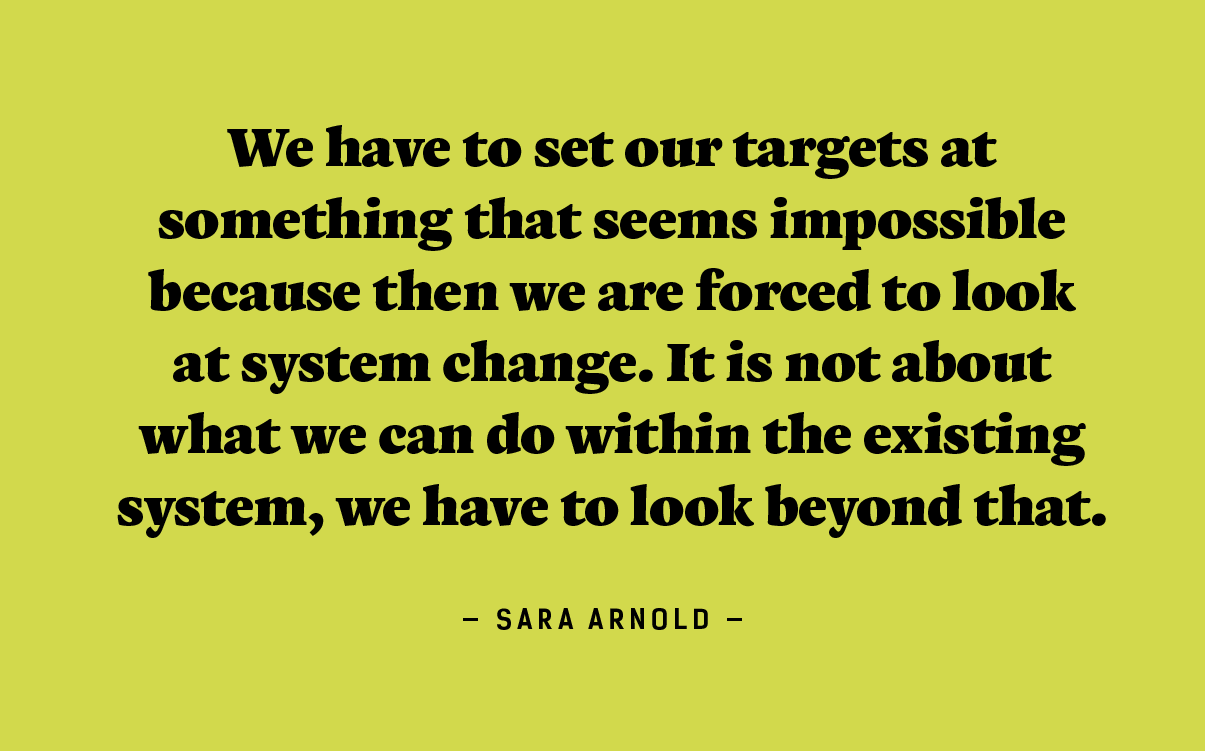
OdC: The science…the science corroborates that if we did stop now, it would get worse before it gets better.
SA: That’s the thing, pollution is currently cooling the earth. We are now 1.1 degrees warmer than we were during pre-industrial times. We need to keep ourselves below 1.5 if we are to avoid the most catastrophic consequences. BUT..If we slam on the brakes right now, the pollution will clear, causing an abrupt rise in temperature. This increase has been predicted to be between 0.5 and 1.1 degrees and so we may well have already used the carbon budget associated with 1.5 degrees of global heating. And that also puts us dangerously close to tipping points that will lead us into a so called ‘hot-house earth pathway’ of runaway climate breakdown. Its predicted that we reach this tipping point at around 2 degrees of global heating. Prof. Jem Bendell released a paper, ‘Deep Adaptation’, that puts together all the science to conclude where it is we are headed. His conclusion is that the collapse of civilisation is soon and inevitable. That immense catastrophe is likely and extinction possible.
‘I have chosen to interpret the information as indicating inevitable collapse, probable catastrophe and possible extinction.’ – Prof. Jem Bendell, Deep Adaptation: A Map for Navigating Climate Tragedy
So that is why we have to think about how we are going to adapt our culture, how we can reconnect with the thought of what it means to have a fulfilled life. What is important to us? This is why we say it’s not really about providing hope to people its saying we just need the courage to get through this and do what is necessary.
OdC: If we look at precedence, historically, the last time there was a massive mobilisation was in the 60’s. I often joke that the peace sign embroidered on jeans practically stopped the Vietnam war but it essentially sparked consumerism.
SM: Its true and now that generation, who are now grandparents, see their grandchildren protesting against it. It’s something I find very moving.
Further reading:
BBC: UK Parliament declares climate change emergency
Fashion Revolution Blog: Fashion Question Time at the V&A
The Guardian: Human society under urgent threat from loss of Earth’s natural life
Open Democracy: Britain just declared a climate emergency. What happens next?
IPCC: Special Report: Global Warming of 1.5 ºC
Life Worth: Deep Adaptation: A Map for Navigating Climate Tragedy
The Library: Study Hall: London Central Saint Martins
Check back every month for more in the Power of Influence series. We’ll post a new entry on the last day of each month throughout 2019. If you think there is someone we should be talking to, drop us a line on instagram.
We host Fashion Revolution Week in April of every year. This year kicked off on the 22nd of April. Throughout the week we encouraged people to ask brands ‘who made my clothes’ in hopes of shining a light on the unknowns of the fashion industry. By doing this, we hope to shift the focus from consumers to brands, and to all the hands involved, be it producers, workers, farmers or otherwise. We track the reach and impact of collaborators throughout Fashion Revolution Week and use the findings to fight for change worldwide, through government and policy. We are able to do this through the generous support of people like you. Please consider donating. Thank you.
Tomorrowland: how innovation and sustainability will change the fashion panorama.
On Wednesday, 24th April 2019, Fashion Revolution hosted our fifth annual Fashion Question Time, a powerful platform to debate the future of the fashion industry during Fashion Revolution Week. This year Fashion Question Time was hosted for the first time at the V&A museum and opening the event up to the public for the first time. The theme this year was Tomorrowland: how innovation and sustainability will change the fashion panorama.
Chaired by Baroness Lola Young of Hornsey, this year’s panel brought together leading figures across government and the fashion industry to discuss the future of the fashion industry.
Attendees included high-level fashion industry representatives from across the sector, global brands, retailers, press, MPs, influencers, and NGOs. Panelists included Mary Creagh, MP and Chair of the Environmental Audit Committee; Laura Balmond, Project Manager, Ellen MacArthur Foundation; Mark Sumner, Lecturer in Sustainability, Fashion & Retail, University of Leeds, and Hendrik Alpen, Sustainability Engagement Manager, H&M Group.
After a welcoming speech from Tim Peeve, an opening speech was made by Sarah Ditty, Policy Director for Fashion Revolution:
“There is an ocean of truth lying undiscovered before us when it comes to the fashion industry of tomorrow. We urgently need to focus on innovation and we need sustainability to be scaled up.”
Below we have selected some questions and answers that were discussed over the 1 hour ½ debate during Fashion Question Time 2019 at the V&A:
Olivia Shaw, Campaign Support Officer for #LoveNotLand
fill and London Waste & Recycling Board asked:
“In a world with finite resources, why does the fashion industry waste around three quarters of what it creates and how are we going change this model to create a fair system for all?”
Laura Balmond, Project Manager, Ellen MacArthur Foundation: It’s not possible to continue as we go on… The amount of clothes produced is rapidly increasing – and we are using clothes 40% less. Less than 1% of materials are going back into fashion we make… We need a huge systemic rethink .. I believe that the circular economy will be business-led. We need businesses to get behind this common vision… The current system doesn’t work. The leaders will continue to push ahead – will the others exist in 5 years time?
Mark Sumner, Lecturer in Sustainability, Fashion & Retail, University of Leeds: Technically there are lots of solutions but there’s no motivation… We have the opportunity to change this and legislation plays an important role. The fashion industry has been around for thousands of years. It plays an important role in self-esteem and identity, plays an important part in our lives. But we can’t stick with the model we have at the moment, we need to change. The Modern Slavery Bill is a good starting point but we need more legislation. More innovative structures in place to penalise businesses – the responsibility needs to be across the whole system.
Mary Creagh, MP and Chair of the Environmental Audit Committee: The current fashion industry model promotes over consumption and under utilisation. My concern is that the policy space in this country, which has historically been a leader on these issues, has been crowded out by the Brexit psychodrama and the space for creative and necessary responses to this is being handed to us. We’re in a unique situation where the public is dragging the Government. We debated the environment twice in Parliament twice yesterday so things are changing but we all need to think about our overconsumption… We also need to strengthen regulation to require greater executive level accountability for tackling modern slavery and reducing greenhouse gas emissions in business and supply chains.
Hendrik Alpen, Sustainability Engagement Manager, H&M Group: Moving to a circular model makes business sense. Right now, H&M operates one of the biggest global take-back schemes.
Sarah Ditty, Fashion Revolution, Policy Director on behalf of Labour behind the Label asked:
The one safety initiative that came out of the Rana Plaza collapse, the Accord on Fire and Building Safety in Bangladesh, is at risk of being expelled from the country at the moment, putting all the progress made in the last six years at risk. At the moment over 50% of the factories still lack adequate fire alarm and detection systems and 40% are still completing structural renovations, these life-saving remediations need to be overseen by the Accord. With the Accord under threat, how can innovations in transparency create a better future for garment workers?
Laura Balmond, Project Manager, Ellen MacArthur Foundation: With innovations around transparency, relies purely on the information that is inputted at the very beginning. So, this then raises the question of how do we verify that and how do we ensure the information you are receiving is correct? Therefore, what are the financial incentives to improve the system? We must incentivise accurate data inputting.
Hendrik Alpen, Sustainability Engagement Manager, H&M Group: The Accord is a very well working mechanism. So, we as a brand, and other brands hope it will continue. Last year 98% of our suppliers were compliant with the Accord’s requirements, and this year, it will be 100% compliance. You talk about incentives, so that’s a sort of incentive we can create to get something back for the work we are investing, besides, you know, it’s the right thing to do. This can also create a level playing field between brands and this is very crucial to make informed choices.
Mary Creagh, MP and Chair of the Environmental Audit Committee:
The real costs of what goes into those clothes are not truly priced. We will only have change if we price clothing based on the material, the labour, and carbon emissions. Those costs are currently passed onto the countries of production… Currently, it’s down to little NGOs to police big brands. Footlocker doesn’t provide an anti-slavery statement on their website, for example… We must make accountants and CEOs accountable for slavery and emissions. Anyone with a pension fund can buy shares in a business, and as a shareholder, you can go to AGMs and to put pressure on these brands.
Sara Arnold of Extinction Rebellion asked:
To have a chance of avoiding the worst effects of the climate and ecological collapse, we must get to net zero carbon by 2025 and halt the loss of biodiversity. The mobilisation we need is unprecedented and as an industry, we should be declaring climate and ecological emergency and acting as so. If this was treated as the emergency that it is, would there be any place for fast fashion? Would there be a place for fashion at all?
Hendrik Alpen, Sustainability Engagement Manager, H&M Group: Obviously, it is hard to say we shouldn’t exist! But I can relate to the thoughts. So, our job is to reduce the impact of what we do. So that’s why we set the goal to be climate positive by 2040, that may be too late, but we are discussing timelines. We have made changes across our stores, and office to be powered by renewable electricity. So, the challenge we have is how do we bring that into the supply chain? And our first goal is to have a climate neutral supply chain by 2030. That’s a huge challenge, we don’t know how to do that, but that’s the challenge we are taking on and we have to take on. Then the question is how can we continue to operate with such a business model which still brings fashion to the people but how do we do that in a better way? Our business model is based on selling products and it still will be for a while and on the other hand, that means jobs for people, joy for people but we need to find a different way.
Laura Balmond, Project Manager, Ellen MacArthur Foundation:
Think of the global population, what do people want, what do people need. Firstly, we need clothes, but then we have a prospect of fashion. Fashion is creative and meets a variety of needs of the people. So you’ve got on the one hand, Instagram bloggers who wear many different outfits and that’s how they’ve learnt to operate. And that’s okay, we don’t want to stifle creativity or fun. At the opposite end of the spectrum, you’ve got the guy that’s had his pair of Levi’s and loves them and doesn’t want them to ever wear out and he’s set for life. So how can the fashion industry rise to the challenge of meeting both these needs and still continue to exist? This can lead to interesting things coming out of this, for instance, an organisation that curates a digital wardrobe, so why do they necessarily need to own clothes at all…This is the end where rental models, swapping will be the way to keep clothes in use for as long as possible, just not with the same person. Then, on the other hand, we need to create well made, durable and repairable clothing. And that’s the challenge for the fashion industry: how can it rise to better meet the needs of the consumers?
Mark Sumner, Lecturer in Sustainability, Fashion & Retail, University of Leeds:
We’ve got 11 years to solve climate change, and I suspect it’s going to be less than that. So I agree, that it’s not fast enough. But I think you need to understand that its systemic part of culture and the part that the fashion industry plays in it. Fashion plays a really important role in our lives, for self-esteem, identity, it’s about projecting our position in society. It a really important part of our lives… I think it’s really interesting when people talk about fast and slow fashion, I go around fabric mills and garment factories, you can see excellent best practice happening in fast fashion supply chain and at the same time, around the corner you see absolutely diabolical conditions in factories supplying to luxury brands, sometimes run by the mafia. So, to think that luxury, fast fashion and slow fashion are different concepts is false. I think what we need to be looking at is brands and retailers that are doing good things, H&M, for example, are trying lots of different models, they haven’t got the answers yet but at least they are trying. Some brands out there don’t even know they have to ask the question about climate change, it’s not on their agenda at all. Those organisations are the ones we really need to metaphorically give them a kick. Different business models need to be developed but that does require significant change, so it’s also about changing the way we behave.
Mary Creagh, MP and Chair of the Environmental Audit Committee:
Thank you [to Extinction Rebellion] for creating the operating space for MP’s like me, who have always been a bit of a lonely voice, to become normalised.
But also, while there is a climate emergency, there’s also a social emergency on hand. And we need to tackle both of these things together. And switching to a low-carbon economy, we have to make it adjust transitionally, we have to make sure we don’t create winners and losers, so that fashion shouldn’t just become something for rich people to enjoy. So, when we look at how we are going to transition, we have got problems with our transport, in agriculture and the way we fuel our homes. So those are the three policy challenges for government. Had we moved from our over-consuming society very quickly, we aren’t going to get to net zero by 2025. The science will tell us what to do to get to net zero by 2050, and then in five years’ time to 2040 and then we’ll aim to get there for 2035. We have wasted the last 10 years, we’ve had no new policy in this country to change behaviour and we’ve done some policy mistakes along the way. I think fashion needs to set out it’s roadmap to net zero. It needs to say how we get to net zero and the target needs to be legally enforceable and not just voluntary.
Dr Mark Sumner, Lecturer in Sustainability, Fashion & Retail, University of Leeds:
This isn’t just about fashion, it’s a culture of consumption. There are brands doing good stuff who are being lambasted by the press and the ones that aren’t doing anything are slipping into the shadows.
Closing Fashion Question Time 2019, Orsola de Castro, co-founder of Fashion Revolution, made a powerful closing speech:
“There is absolutely no excuse anymore. We all have to do what is required of us as people, people working in companies, in governments, in education, in the media, and at home. We have to fight the system and we have to fight our lifestyle. We can’t do this without information and we can’t access verifiable, comparable and understandable information without transparency and public disclosure… We have to move from a culture of exploitation to one of appreciation and place respect for resources and for each other before every deed and every process.”
The other questions asked were:
Antonio Roade, Senior CSR Manager, New Look asked:
Technology will be vital to transition towards a circular economy; and we keep on seeing big companies investing millions collaborating with different research institutions; in different areas and often with no clear outputs. How do we coordinate different initiatives and who should be taking the lead on this (research institutions, governments or brands)?
Elle L, Artist, Expert Advisor in Fashion and Media to United Nations Environment Programme asked:
As we know, fast fashion uses a lot of synthetics which we in the room and the government now know to be highly toxic and damaging to the environment — do you think that a tax can and should be implemented to minimise or how do we phase out the amount of synthetics produced?
Julie Hill, Chair of WRAP asked:
What are the best tools to drive resource efficiency and transparency in the fashion supply chain?
Jennifer Eweh, Designer and Entrepreneur, Eden Diodati asked:
What are the opportunities and challenges involved with automation, blockchain, and artificial intelligence being used within the fashion supply chain?
Siobhan Wilson, Owner, The Fair Shop asked:
Small business and organisations have been driving change in communities across the country and beyond in making, repairing, reinventing and reusing. How can these businesses be nurtured and supported more here in the UK, so they can flourish at a greater scale and gain further exposure to a mainstream fashion audience?
Jasmine Hemsley, Cook, Author and wellness expert, asked:
What will our future look like without sustainable fashion being commonplace?
A very special thank you to the Edwina Ehrman for opening the V&A to Fashion Revolution’s Fashion Question Time and to the rest of the V&A team for your efforts in making this event a success. And a thank you to Sienna Somers and the rest of the Fashion Revolution team for organising this event.
All images Copyright Rachel Manns / www.rachelmanns.com / @rachel_manns / Rachel Manns is an internationally commissioned freelance photographer based in London, UK. She has spent the last decade shooting for a range of clients all over the world. She has a strong passion for sustainability and human rights. With fierce ethical values and a beautiful visual style, Rachel’s work perfectly intertwines the two. Her aim is to use her camera to aid positive change globally, whether that’s politically or commercially, whilst never compromising on aesthetic. Get in contact for rates.
WHY SHOULD BRANDS PUBLISH SUPPLIER LISTS?
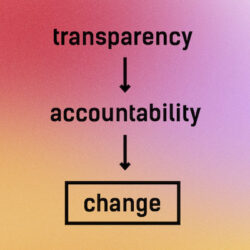
Publicly disclosed supplier lists are helping trade unions and workers rights organisations to address and fix problems which workers are facing in the factories that supply major brands and retailers. This sort of transparency makes it easier for the relevant parties to understand what went wrong, who is responsible and how to fix it. It also helps consumers better understand #whomademyclothes.
“Knowing the names of major buyers from factories gives workers and their unions a stronger leverage, crucial for a timely solution when resolving conflicts, whether it be refusal to recognise the union, or unlawful sackings for demanding their rights. It also provides the possibility to create a link from the worker back to the customer and possibly media to bring attention to their issues.” says Jenny Holdcroft, the Assistant General Secretary of IndustriALL Global Union
HAVE WE SEEN AN INCREASE IN BRANDS PUBLISHING SUPPLIER LISTS?
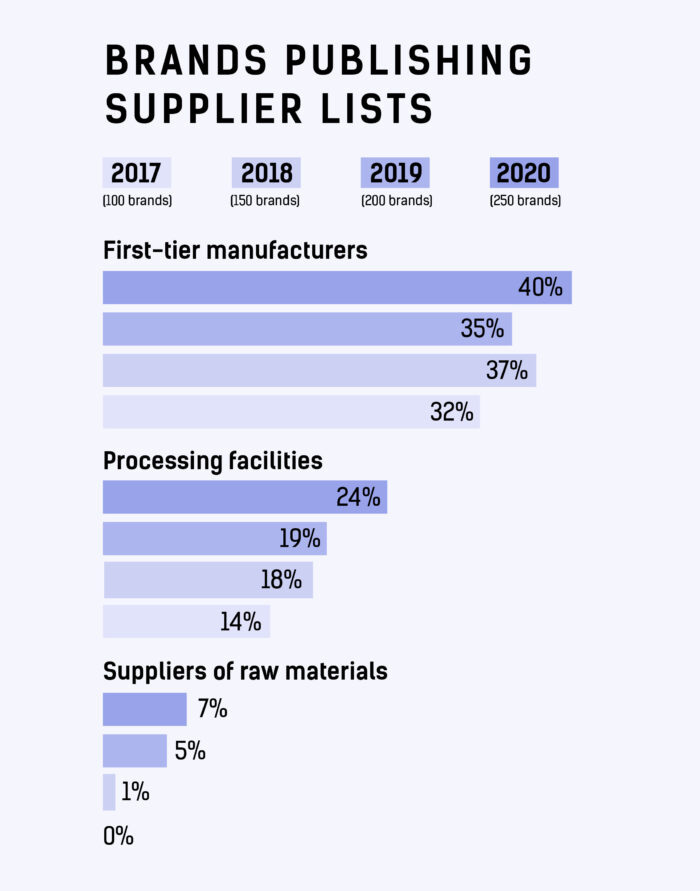
Since we began the Fashion Transparency Index in 2016, we have seen a significant increase in the number of brands publishing their first tier, processing and raw materials suppliers. In our 2020 edition of the Fashion Transparency Index, 101 out of 250 brands (40%) are publishing their first-tier manufacturers, up from 35% in 2019. These are the facilities that do the cutting, sewing and finishing of garments in the final stages of production.
60 out of 250 brands (24%) are publishing some of their processing facilities, up from 19% in 2019. These are the sorts of facilities that do ginning and spinning of yarn, knitting and weaving of fabrics, dyeing and wet processing, leather tanneries, embroidering and embellishing, fabric finishing, dyeing and printing and laundering.
And, 18 out of 250 brands (7%) are publishing some of their raw material suppliers, up from 5% in 2019. These suppliers are those that provide brands and their manufacturers further down the chain with raw materials such as cotton, wool, viscose, hides, rubber and metals.
HOW MANY BRANDS ARE NOW PUBLISHING SUPPLIER LISTS?
We have looked at large brands (over £36 million annual turnover) beyond the Fashion Transparency Index to count the number that are publishing lists of their suppliers. Below, you will find a list of over 200 brands that are publishing their first-tier manufacturers, 60 brands that are publishing their processing facilities and 21 brands that are publishing their raw material suppliers.
We are always pushing brands to provide more information about the people who make their clothes, and you can encourage them to do so too. Always ask the brands you buy #WhoMadeMyClothes. You can do this by tagging your favourite brands on social media and using this hashtag, or you can use our automated email tool to get in touch with them directly.
Brands who publish first-tier supplier lists
First-tier/ Tier One/ manufacturing suppliers are those which have a direct relationship with buyer e.g. production units, Cut Make Trim (CMT) facilities, garment sewing, garment finishing, full package production and packaging and storage.
& Other Stories (H&M group)
Abercrombie & Fitch
Adidas
ALDI-Nord
ALDI SOUTH
Amazon
Ann Taylor
Anthropologie (URBN)
ARROW (PVH)
ASICS
Aldi North
ASOS
Athleta (GAP Inc.)
Autograph (Speciality Fashion Group)
Banana Republic (GAP Inc.)
Berghaus (Pentland Brands)
Berlei (Hanes)
BESTSELLER
BigW (Woolsworth Group)
Black Pepper (PAS Group)
Boden
Bon Prix
Bonds (Hanes)
Boxfresh (Pentland Brands)
Brand Collective
Brooks Sports
Burton (Arcadia)
C&A
Calvin Klein (PVH)
Champion (Hanes)
Cheap Monday (H&M group)
City Chic (Speciality Fashion Group)
Clarks
Cole’s (Wesfarmers Group)
Columbia Sportswear Co.
Converse (NIKE, Inc)
Cos (H&M group)
Cotton:On
Crossroads (Speciality Fashion Group)
Curvation (Fruit of the Loom, Inc.)
David Jones
Debenhams
Designworks (PAS Group)
Disney
Dorothy Perkins (Arcadia)
Dressmann (Varner)
Eagle Creek (VF Corporation)
Eastpak (VF Corporation)
Eileen Fisher
El Corte Inglés
Ellesse (Pentland Brands)
Esprit
Evans (Arcadia)
Factorie (Cotton On Group)
Fanatics
Fjällräven
Forever New
Free People (URBN)
Fruit of the Loom
G-Star
Galeria Inno (HBC)
Galeria Kaufhof (HBC)
Gap
George at Asda (Walmart)
Gildan
H&M
Hanes
Helly Hansen
HEMA
Hermès
Holeproof Explorer (Hanes)
Hollister Co. (Abercrombie and Fitch Co.)
Hudson’s Bay Company (HBC)
HUGO BOSS
Hurley (NIKE, Inc)
Intermix (GAP Inc.)
IZOD (PVH)
JACK&JONES (BESTSELLER)
Jack Wolfskin
Jacqueline de Yong (BESTSELLER)
JAG (APG & Co)
Jansport (VF Corporation)
Jeanswest
JETS Swimwear (PAS Group)
Jockey (Hanes)
John Lewis
Joe Fresh (Loblaw Companies Limited)
Jordan (NIKE, Inc)
Junarose (BESTSELLER)
KangaROOS (Pentland Brands)
Kathmandu
Katies (Speciality Fashion Group)
Kaufland
Kayser (Hanes)
Kipling (VF Corporation)
Kmart Australia (Wesfarmers Group)
Lacoste
Lee (VF Corporation)
Levi Strauss & Co.
Lidl
Lindex
Littlewoods (Shop Direct)
Loblaw
Loft (Ascena)
Lord & Taylor (HBC)
lucy (VF Corporation)
Lululemon
Majestic (VF Corporation)
Mamalicious (BESTSELLER)
Mammut
Marco Polo (PAS Group)
Marimekko
Marks & Spencer
Matalan
MEC
Millers (Speciality Fashion Group)
Missguided
Miss Selfridge (Arcadia)
Mizuno
Monki (H&M group)
Monsoon
Morrisons (Nutmeg)
Name It (BESTSELLER)
Napapijiri (VF Corporation)
Nautica (VF Corporation)
New Balance
New Look
Next
Nike
Noisy May (BESTSELLER)
Nudie Jeans
Old Navy (GAP Inc.)
Only (BESTSELLER)
Only & Sons (BESTSELLER)
Outerknown (Kering Group)
Outfit (Arcadia)
OVS
Patagonia
Pieces (BESTSELLER)
Pimkie
Playtex (Hanes)
Primark
Prisma (S Group)
Puma
R.M Williams
Razzamatazz (Hanes)
Red or Dead (Pentland Brands)
Reebok (Adidas Group)
Reef (VF Corporation)
REI Co-op
Review (PAS Group)
Rider’s by Lee (VF Corporation)
Rio (Hanes)
River Island
Rivers (Speciality Fashion Group)
Rock & Republic (VF Corporation)
rubi (Cotton On Group)
Russell Athletic (Fruit of the Loom, Inc.)
Sainsbury’s – Tu Clothing
Saba (APG & Co.)
Sak’s Fifth Avenue (HBC)
Selected (BESTSELLER)
Sheer Relief (Hanes)
Sisley (Benetton Group)
Smartwool (VF Corporation)
SPALDING (Fruit of the Loom, Inc.)
Speedo (Pentland Brands)
Sportscraft (APG & Co.)
Supré (Cotton On Group)
Target
Target Australia (Wesfarmers Group)
Tchibo
Ted Baker
Tesco
The North Face (VF Corporation)
The Warehouse
Timberland (VF Corporation)
Tod’s
Tommy Hilfiger (PVH)
Tom Tailor
Topman (Arcadia)
Topshop (Arcadia)
Under Armour
Uniqlo (Fast Retailing)
United Colours of Benetton (Benetton Group)
Urban Outfitters (URBN)
Van Heusen (PVH)
Vanity Fair Lingerie (Fruit of the Loom, Inc.)
Vans (VF Corporation)
Vassarette (Hanes)
Vero Moda (BESTSELLER)
Very (Shop Direct)
Victoria’s Secret (L Brands)
Vila Clothes (BESTSELLER)
Voodoo (Hanes)
Wallis (Arcadia)
Warner’s (PVH)
Weekday (H&M group)
White Runway (PAS Group)
Wrangler (VF Corporation)
Yarra Trail (PAS Group)
Y.A.S. (BESTSELLER)
Zalando
Zeeman
Total: 204
Brands who publish processing facilities list
Processing facilities (often referred to as facilities beyond tier 1) are involved in the production of clothing whose activities could involve ginning and spinning, knitting, weaving, dyeing and wet processing, tanneries, embroidering, printing, fabric finishing, dye-houses and laundries.
Adidas
Anthropologie (URBN)
ASICS
ASOS
Banana Republic (GAP Inc.)
Bon Prix
Burton (Arcadia)
C&A
Calvin Klein (PVH)
Champion (Hanes)
Clarks
Converse (NIKE, Inc)
Debenhams
Disney
Dressmann (Varner)
Eileen Fisher
Ermenegildo Zegna
Esprit
Free People (URBN)
Gap
Gildan
G-Star RAW
H&M
Hanes
Helly Hansen
HEMA
Hermès
Jack Wolfskin
Jordan (NIKE, Inc)
Kaufland
Levi Strauss & Co.
Lindex
Lululemon
Monsoon
New Balance
New Look
Nike (Nike, Inc.)
Nudie Jeans
Old Navy (GAP Inc.)
Patagonia
Puma
Reebok (Adidas Group)
Russell Athletic (Fruit of the Loom, Inc.)
Sainsbury’s – Tu Clothing
Target
Tchibo
Tesco
The North Face (VF Corporation)
The Warehouse
Timberland (VF Corporation)
Tommy Hilfiger (PVH)
Topman (Arcadia)
Topshop (Arcadia)
Uniqlo (Fast Retailing)
United Colours of Benetton (Benetton Group)
Urban Outfitters (URBN)
Van Heusen (PVH)
Vans (VF Corporation)
Warner’s (PVH)
Wrangler (VF Corporation)
Total: 60
Brands who publish raw materials supplier list
Raw material suppliers are those which provide the commodity for the production of clothing e.g. cotton, wool, viscose or polyester.
ASOS
Balenciaga (Kering)
Bottega Veneta (Kering)
C&A
Eileen Fisher
Ermenegildo Zegna
Esprit
Gucci (Kering)
H&M Group
Lululemon
Marks & Spencer
Morrisons (Nutmeg)
Nudie Jeans
Patagonia
SAINT LAURENT (Kering)
Tesco
The North Face (VF Corporation)
Timberland (VF Corporation)
United Colours of Benetton (Benetton Group)
Vans (VF Corporation)
Wrangler (VF Corporation)
Total: 21
Please note: We are not endorsing the brands included in this list; this is not a ‘seal of approval.’ While publishing supplier lists is a necessary step towards greater transparency and improved conditions in fashion supply chains, it does not guarantee ethical business practices. However, we hope you find this list informative and continue to ask brands #whomademyclothes.
This list is not exhaustive and only accurate as of April 2020; if you are aware of other large brands (over £36 million annual turnover) that are publishing their suppliers, please let our Policy and Research team know at transparency@
Sparked by the buzz around HRH Meghan Markle choosing to shop amongst sustainable brands (yay), we found ourselves interested in learning more about the conscious and subconscious effect of social influencers and how that can shape our buying habits. Throughout 2019, we will be sharing our ‘Power of Influence’ series, talking to people within the fashion and social media realms about how they are using their platform for positive action. In this post, we celebrate Mutha.
Mutha are my favourite new source for all things sustainability. They not only have great fashion related content but they also delve in to other areas such as food, tech, sport and feminism. Their youtube channel is hosted by an insanely engaging team of presenters and their #relatable language and design aesthetic is something to be envious of. Current faves in their playlists include ‘Zero Waste Man‘ and ‘Black Friday Madness‘. To find out more about how it all happens, I chatted to Susan Adegboye, Mutha’s social media coordinator.
[youtube v=”6XqRPsULEnk”]
What is Mutha and how did it start?
So Mutha stemmed from wanting to celebrate the individuals and organisations operating in the world of food, fashion, travel and sport that are making a conscious effort to look after this planet of ours. We wanted to create a platform dedicated to the forward thinkers that were shifting the dial for a sustainable future, highlighting the importance of looking after the planet but without the scaremonger tactics.
Can you explain a little about the kind of content Mutha is creating to bridge that gap?
We tried to bridge that gap by including communities and groups that have previously never really been involved. A good example of this is SpAir Max Day, where we decided to tap into the sneaker community.
Coinciding with Nike Air Max Day on March 26th, we filmed a two-part series with renowned sneaker head Kish Kash, encouraging the sneaker community and a few household names such as Annie Mac, Clara Amfo and Leo Greenslade, to look into their vaults and donate some of their used, worn-in and probably landfill destined kicks to launch the first ever pop up sneaker shop where customers donate instead of buy. With the aim of collecting 1000 pairs of Air Max, cleaned by the team at Jason Markk and donated to the Brixton Soup Kitchen clothing and shoe bank.
We wanted to show the Mutha audience that upcycling and donating our used clothing and shoes not only has a positive impact on the environment, but that it can help people in our community in need. We wanted to work with the sneaker community to show how they can come together to do something good.
[youtube v=”ABaUzcJk33Q”]
I think thats a really interesting point – including communities that haven’t previously been part of the conversation. At this point, it feels like there is something everyone can do to play their part.
Exactly!
One of Muthas instagram post states ‘you don’t have to be perfect, just do your best’. Do you think there is a tendency to shame when it comes to issues of sustainability?
Nobody’s perfect and we all make mistakes, we’re human after all. It’s about what we do after the mistakes that really matters.
On that note, the team of presenters on Mutha feels very natural, honest, like they are part of the communities they interact with and they are experiencing the challenges and issues at the same time the audience are. Was it a conscious decision to work in this way?
Our presenters and the rest of the Mutha team, do not want to preach, but rather learn and share to inspire positive change. They represent the team behind the scenes who create the content and more importantly the audience who watch it. Our presenters come from varied backgrounds and have passions in totally different areas, but are all connected in the quest to learn and to live in a more sustainable way.
Thats definitely something that personally resonated with me when I first came across Mutha. It’s an inviting atmosphere. You sympathise and relate to the faces and voices you see and hear. Have you seen a positive reaction to this approach? Do your audience get it? Are they realising what they can do?
Ah we’re happy to hear that! At Mutha we believe that change has to start from within, we’re all on a journey here and in the 9 months since we started it we’ve all seen changes in ourselves and in our habits. The world of sustainability is often filled with doom and gloom, but a lot of us feel more optimistic now than we did before we started this journey. All the people that we’ve featured on our channel (and most of the feedback that we’ve received from our audience) is that Mutha feels like a celebration and inspires us to take the small actions that lead to big change.
So what does the future of Mutha look like?
The future of Mutha looks bigger and better, creating a lasting impact on an even wider scale. We hope that we can continue to provide a place where people can learn about sustainability and appreciating the world that we live in.
Thanks, Susan!
To keep up to date with all things Mutha, you can follow them on instagram and subscribe to their youtube channel. The second part of their two part SpAir Max Day initiative launched April 4th – see the video here.
Check back every month for more in the Power of Influence series. We’ll post a new entry on the last day of each month throughout 2019. If you think there is someone we should be talking to, drop us a line on instagram.
We host Fashion Revolution Week in April of every year. This year kicks off on the 22nd of April. Throughout the week we encourage people to ask brands ‘who made my clothes’ in hopes of shining a light on the unknowns of the fashion industry. By doing this, we hope to shift the focus from consumers to brands, and to all the hands involved, be it producers, workers, farmers or otherwise. We track the reach and impact of collaborators throughout Fashion Revolution Week and use the findings to fight for change worldwide, through government and policy. We would hugely appreciate it if you would be willing to share a story or celebrate a brand you love or simply ask #whomademyclothes during Fashion Revolution Week in 2019.
Photo: Shilpi Rani Das started working in a garment factory when she was 12 years old and moved to work at Rana Plaza at 13. She was working on the 8th floor at the time of the factory collapse. She lost an arm and spent the next 2 1/2 years in hospital. She is now at school, plays badminton and supports her family by sending money home. She is starting Open University.
The theme of International Women’s Day 2019 is #BalanceforBetter and asks how we can help forge a more gender-balanced world. Brands and retailers are, predictably, all doing their bit to show support, from Pretty Little Thing’s promotion of their #EveryBodyInPLT movement with T-shirts from £10, with profits going to the charity WAGGGS to Net-a-Porter’s limited edition collection in collaboration with six female designers, with profits going to Women for Women International.
None of the webpages about the T-shirts feature any information about how or where they are made or who made them. About 75 million people work directly in the fashion and textiles industry and about 80% of them are women. Many are subject to exploitation and verbal and physical abuse. They are often working in unsafe conditions, with very little pay.
Actress Aisling Bea tweeted during Fashion Revolution Week last year: “My particular bugbear is feminist tees which were not made by women who were paid fairly for their labour. Check your tags and brands.”
Slogan T-shirts with female empowerment messages will be everywhere this week to coincide with International Women’s Day, but the reality is that the fashion industry doesn’t empower the majority of women who work in it. Gender-based inequality remains a problem throughout the industry, from the highest levels of management to the shop floor and the factory floor. We still have a very long way to go until everyone who makes our clothes can live and work with dignity, in healthy conditions and without fear of losing their life.
One of the main projects Fashion Revolution worked on in 2017/18 was the Garment Worker Diaries. On-the-ground research partners met with 540 garment workers in India, Cambodia and Bangladesh on a weekly basis for twelve months to learn the intimate details of their lives. 60% reported gender-based discrimination, over 15% reported being threatened and 5% had been hit. When I met with the President of the Bangladesh Garment Manufacturers and Exporters Association in November 2017, he told me categorically that sexual harassment doesn’t exist in garment factories in Bangladesh. One statistic I found particularly shocking was that 40% of the workers surveyed had seen a fire in their place of work. The women making our clothes are still risking their lives every day for our fashion fix.
In January, The Guardian revealed that Spice Girls T-shirts raising money for Comic Relief’s Gender Justice campaign were being made at a factory in Bangladesh where women earned 35p an hour and claimed to be verbally abused and harassed. Garment production in Bangladesh is still carried out in a very opaque manner and the lack of information about where our clothes and shoes are made and who made them is a huge barrier to changing the fashion industry. This means that gender inequality and human rights abuses and remain rife. If you can’t see it, you can’t fix it, which is why Fashion Revolution urges all brands and retailers to have full supply chain transparency, and we track this through our annual Fashion Transparency Index.
Fashion Revolution’s Fashion Transparency Index 2018 which reviews and ranks 150 major global brands and retailers according to their social and environmental policies, practices and impacts, throws a spotlight on how brands and retailers are tackling gender-based discrimination and violence in supply chains. The report specifically looks at how they are supporting gender equality and promoting female empowerment, both in their own company and in the supply chain.
Whilst, most brands publish policies on discrimination, harassment and abuse, the research show that only 37% of brands are publishing human rights goals. Without reporting on goals and, importantly, annual progress towards these goals, consumers have no way of knowing whether their clothing purchases are really helping to drive improvements for the women who are making their clothes.
Only 40% of brands and retailers reported on capacity building projects in the supply chain that are focused on gender equality or female empowerment, while just 13% publish detailed supplier guidance on issues facing female workers in their Supplier Codes of Conduct. Only 37 out of the 150 brands surveyed report signing up to the Women’s Empowerment Principles, an initiative by the United Nations Entity for Gender Equality, or publishing the company’s overall strategy and quantitative goals to advance women’s empowerment. Meanwhile, just 5% of brands are disclosing any data on the prevalence of gender-based labour violations in supplier facilities, such as sexual harassment and other forms of gender-based violence, or the treatment and firing of pregnant workers.
In the 2019 Fashion Transparency Index, to be published in April, we will be surveying 200 brands and asking the same questions around women’s empowerment. Women’s economic empowerment and closing gender gaps at work is key to realising women’s rights and central to achieving the 2030 Agenda for Sustainable Development, in particular SDG 8 on promote sustained, inclusive and sustainable economic growth, full and productive employment and decent work for all.
According to the BoF McKinsey & Company report The State of Fashion 2019 “Younger generations’ passion for social and environmental causes has reached critical mass, causing brands to become more fundamentally purpose driven to attract both consumers and talent”. As a result, the appearance of the word “feminist” on retailer homepages and newsletters is forecast to increase in frequency sixfold compared to two years ago. Brands are adopting feel-good feminist slogans, yet the rise of real feminism and female empowerment within the industry is a long way off for most women who work in it, from the highest levels of management to the shop floor and the factory floor.
If we really want to see a more gender balanced world, brands and retailers need to do more than sell empowering T-shirts; they need to make sure their policies are put into practice. And not just in the visible places, on fashion shoots or within their company, but at every level of their supply chains. The people making our clothes may not be visible, but every garment they make has a silent #MeToo woven into its seams. At Fashion Revolution, we believe positive change in the fashion industry is possible, and it starts with transparency.
Sparked by the buzz around HRH Megan Markle choosing to shop amongst sustainable brands (yay), we found ourselves interested in learning more about the conscious and subconscious effect of social influencers and how that can shape our buying habits. Throughout 2019, we will be sharing our ‘Power of Influence’ series, talking to people within the fashion and social media realms about how they are using their platform for positive action. In this post, we talk to Ashley AKA bestdressed.
There is something different about Ashley’s videos. There is no big agenda, no preaching or bragging, no shaming when she talks about clothes. There is just this subtle little undercurrent of care and attention in the way she approaches her wardrobe. Thrifting, flipping (making new things out of old things) and the occasional scattering of self-deprecating humour makes for some exceedingly entertaining videos. Being an avid fixer and flipper myself, I wondered what made Ashley start working in this way and what effect, if any, she thinks it has on her audience.
Could you share your name and various media handles:
Ashley (aka bestdressed)
Youtube: bestdressed
Instagram: @best.dressed
Upon first glance, your youtube channel might seem like many others – OOTDs, clothing hauls and ‘day in the life of’s. When digging in though, your approach to sustainability through thrifting, upcycling and flipping your finds is totally ingrained into everything you do and say. For us, this is such an important and positive message to be spreading, something that others on the platform can seem to ignore. What made you start working in this way? Was sustainable fashion something you’ve always been conscious of?
I’m flattered, but honestly I never made a conscious choice to be a ~hero~ of sustainability! My love of thrifting and tendency to rewear clothes really comes from a financial perspective. When I was a younger, I never liked thrifting, My sister would always find gems, but I’d get bored and frustrated 15 ugly sweaters in and go play Doodle Jump in a corner. But two summers ago, when was in full on chipmunk mode post-wisdom teeth removal, I needed something to pass the time before my cheeks deflated. Lo and behold, I decided to go thrifting, and finally found some cool stuff. From that point on, I was obsessed – mostly because at that point I was still working for $8 an hour at an ice cream shop and could use the cheapest clothes I could get. Plus, I was about a year into my (vastly unsuccessful at that point) YouTube career. I would post a haul or OOTW here and there, but I could never seem to keep up with other girls who would have five completely new outfits each week. Thrifting, for me, was a way to experiment with my style and make interesting content, and rewearing clothes for years (even “fast fashion” clothes from Forever21) was just a product of not having that much money.
In a lot of your videos you alter, adjust, flip your existing clothes (or second hand clothes) into something totally new. Do you think it’s something everyone could and should be doing? Does this satisfy the itch to own something new, without playing into the fast-fashion world?
For me, it’s even better! It’s like Marx’s theory of alienation from the work product, right? There’s something so satisfying about making or altering something yourself. Every time you look at it or wear it you get to be like “Damn! I did that! And nobody else has anything like it!” I know everyone’s not the craftiest or has time to alter their clothes, but I hope I can encourage people to at least give it a try! Something as simple as patching up a hole instead of throwing a shirt out, or cropping an old t-shirt are a great place to start!
Do you feel the pressure from brands to buy? Do you think it’s possible to stay fashionable without buying in excess?
Absolutely. That’s the whole job of the marketing industry. And now social media is overtaken by the marketing industry. So every day, tons of images and videos are telling you that you want new things. Honestly I fall victim to this too. It’s usually only when I’m bored or procrastinating or feeling shitty, but I’ll go into this fervor of opening tabs and adding items to my cart. Normally the total price at checkout stops me though, haha. I don’t go to malls anymore because they make me crazy. Literally my brain just goes: clothes! clothes! more clothes! I sound insane but I swear this probably happens to a lot of us. Luckily, a lot of what’s “fashionable,” at least for a certain segment of internet hipsters, is shifting towards thrifted and vintage clothes. I love that it’s cool now to wear an old oversize t-shirt or a vintage linen dress. Since my entire job revolves around fashion, I do still buy new clothes, but I always think about my purchases thoughtfully and try to mix in thrifted, vintage, sustainable, and altered clothes.
Do you see an uptake in responsibility from your followers when you share content that focuses on sustainable issues? Do their responses show that they’re thinking differently about what they buy and how they buy?
Honestly unfortunately I think it’s a bit of singing to the choir when it comes to sustainable vs. fast fashion. There are still crazy amounts of $300, $500, $5000 Wish/Zaful/Shein hauls online, with audiences willing to watch. I’m chillin over here in my corner of the internet with gals who already love thrifting. And who’s reading this article? Surely people who already care about sustainable fashion. Perhaps that’s just me being a bit of a pessimist. In the long run, I think sustainable content can change how people think, but it takes time. I hope that at least some people who have subscribed to my channel from a fashion video have found their way to a thrift haul, and after watching a couple, have tried thrifting on their own! And maybe my thrift flips makes fellow sewing nerds like me feel a little cooler lol.
Okay now for some quick ones…
- Current favourite piece in your closet?
A sherpa jacket I thrifted from the men’s section! So cozy and looks like it cost a fortune - Do you remember the first piece of clothing that you ever bought for yourself?
A gray American Eagle hoodie in 6th grade - Do you still have it?
I wore it nearly every day to school for 3 years (I was one of those kids) but we had to part ways after it was pretty much falling apart. - Do you know who made the clothes you are currently wearing?
My top is thrifted (so not sure who made it originally) and my jeans are Redone vintage Levi’s made in the US. - Top tip for others wishing to shop more responsibly?
Start with browsing a vintage or thrift store, finding a few quality sustainable pieces to invest in, looking through your own closet to find old gems you forgot you loved… or even remembering to return items you don’t end up loving – that’s a huge one! It’s so easy, you get your money back, and you don’t end up with clothing sitting in the back of your closet. You’d be amazed by how many people buy stuff and can’t be bothered to return it. I think sustainable culture can be a bit intimidating and make you feel guilty for your past purchases or if you aren’t perfectly sustainable at the start. It’s all about starting small – even if you just stop and think about one fast fashion purchase per month, that’s still awesome!
Thanks, Ashley 🙂
Check back every month for more in the Power of Influence series. We’ll post a new entry on the last day of each month throughout 2019. If you think there is someone we should be talking to, drop us a line on instagram.
We host Fashion Revolution Week in April of every year. This year kicks off on the 22nd of April. Throughout the week we encourage people to ask brands ‘who made my clothes’ in hopes of shining a light on the unknowns of the fashion industry. By doing this, we hope to shift the focus from consumers to brands, and to all the hands involved, be it producers, workers, farmers or otherwise. We track the reach and impact of collaborators throughout Fashion Revolution Week and use the findings to fight for change worldwide, through government and policy. We would hugely appreciate it if you would be willing to share a story or celebrate a brand you love or simply ask #whomademyclothes during Fashion Revolution Week in 2019.
Sparked by the buzz around HRH Megan Markle choosing to shop amongst sustainable brands (yay), we found ourselves interested in learning more about the conscious and subconscious effect of social influencers and how that can shape our buying habits. Throughout 2019, we will be sharing our ‘Power of Influence’ series, talking to people within the fashion and social media realms about how they are using their platform for positive action. First up is Arden Rose.

I was recommended Arden’s youtube channel by Youtube itself (thanks algorithms). Finding a funny, interesting AND socially, environmentally conscious human who also creates entertaining content is pretty rare, right? Exactly. I was hooked right away, and with 1.4 million youtube subscribers and coming up to 900k followers on instagram, I wasn’t the only one. My first point of call was watching the fantastically titled ”how to NOT destroy the planet while shopping“. There were many questions I wanted to ask, much admiration I wanted to share. So…after a quick binge of other videos, and a swift click of the subscribe button, Arden became the first in this series of interviews. Her answers didn’t disappoint. Read on, read on…
To start, could you share your name and various media handles:
@ardenrose on everything!!
In a community of hauls, where buying in excess and presenting that image to the world is commonplace, you choose to do differently. We think that’s totally awesome and also pretty brave. Was it hard for you to step away from the established way of working and suggest a different way of doing things?
It was hard in the sense that hauls tend to do well on YouTube and they’re easy (i.e. unoriginal) content to make. Honestly, buying that much junk was tiring, it filled up my closet with trendy pieces I don’t want in a month, and it was boring to make. I’m so much happier to share clothing that I had to hunt or search for to make it sustainable and worth showing on my channel! Honestly, everyone should give themselves the challenge of not relying on constantly selling their audience on cheap slave labor. Definitely helps me sleep (slightly) better at night.
Your video ‘how to NOT destroy the planet while shopping’ is SO well informed and honest and great. You mention other youtubers who inspired your choices. Do you think more people on the platform need to be addressing these issues?
ABSOLUTELY. It shocks me that people can just turn a blind eye to the obvious pain they allow corporations to get away with or ignorantly support. Everyone should be promoting sustainable business practices, especially the women on the internet that tend to to push fast fashion as a “cheap” and “easy” alternative to a constantly refreshing industry like the fashion industry. Viewers should be educated, but at the very least the entertainers who are preaching to them should be educated.
Have you always been a conscious consumer or was there a moment when the switch flipped and you started to think more about the way you buy?
I touch on this briefly in my “how to NOT destroy the planet while shopping” video, but I used to make H&M and Forever21 hauls allllll the time. Constantly. My channel was filled with that shit. Fortunately I sat down and watched all the necessary documentaries and read all of the articles late last year and completely got my stupid self educated on the issue. Honestly, I always KNEW that fast fashion was bad business, but I was wilfully ignorant so that I didn’t have to give up my shopping addiction that felt baked into my personality.
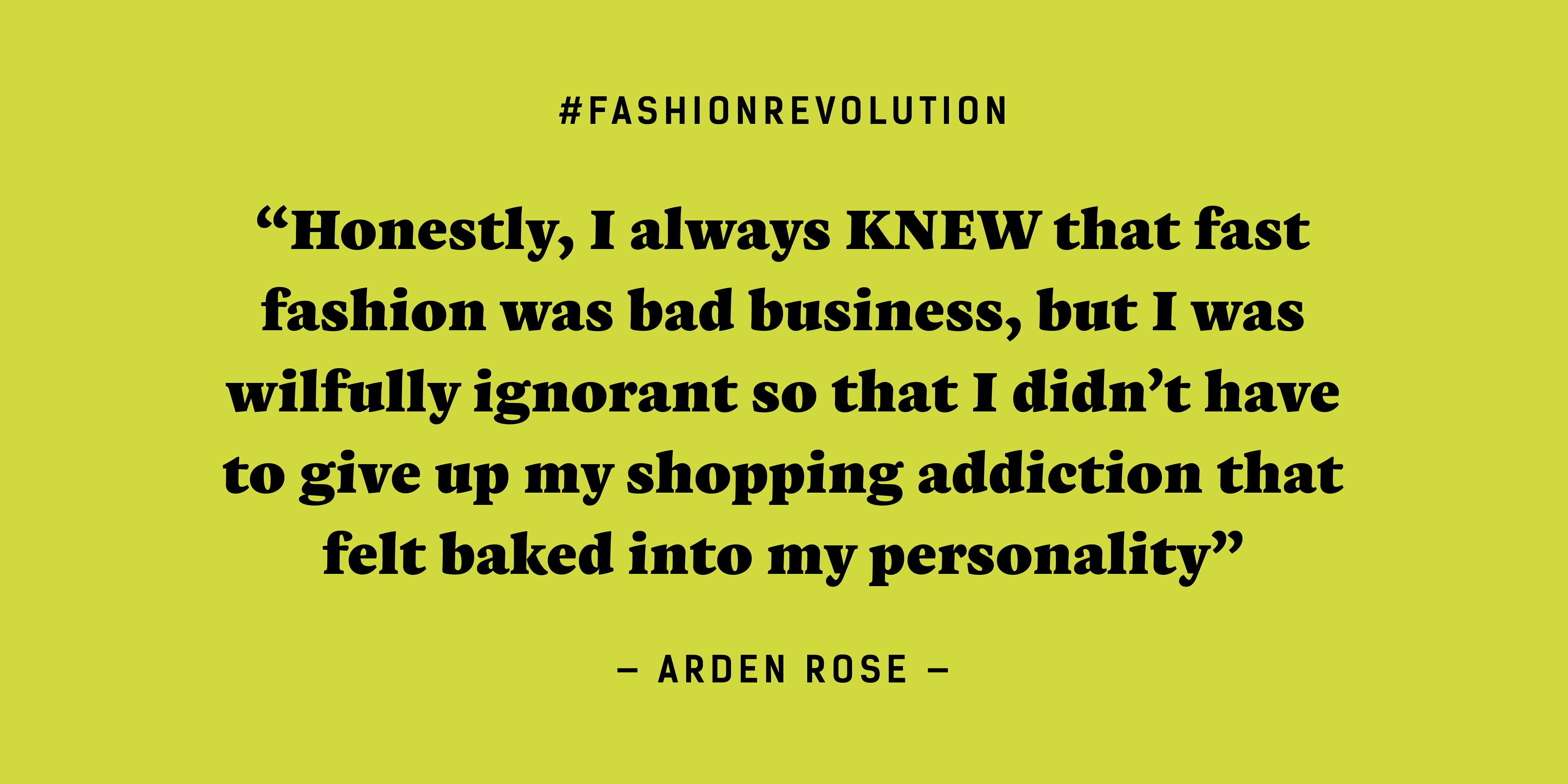
Do you see an uptake in responsibility from your followers when you share content that focuses on sustainable issues? Do their responses show that they’re thinking differently about what they buy and how they buy?
Yes!! And that’s what’s so amazing to me! I don’t even have the largest audience but I get hundreds of comments about my sustainability video a week. I didn’t even think that many people saw it! Nowadays, consumers want to be in the know, and they want clear consciences. Having a friend on the internet (me!) sitting you down and calling you out on the way you’ve been spending your money is helpful and doesn’t feel accusatory! It feels like friendly advice which is important. A lot of people get turned off of the sustainability conversation because it sounds preachy. You need to be a friend to these people, not a holier than thou asshole. I like to think I’ve helped a lot of young women and men rethink their spending habits when it comes to fashion, but I also think it’s just the power of a younger generation that actually cares about others and the planet! They’re awesome and so fired up for change!
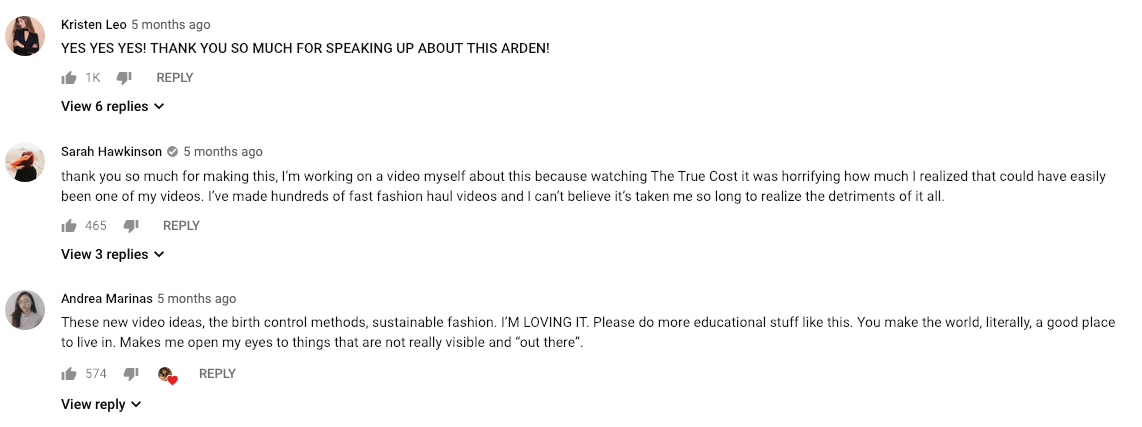
Do you think it is easy to find and share information about the sustainability of fashion brands and the effects of fast fashion on people and planet? Is there anything you can think of that would help make it easier to do so?
It is easy if you want to find it. It would be easier if large publications and fashion houses made it a priority to promote the message. It doesn’t benefit the industry to reveal its ugly underbelly, so they try to hide it, or dangle a carrot in your face via a “sustainable line” that only happens once in a blue moon. If there was a grassroots coalition of the top fashion bloggers and instagram baddies calling these companies out and only promoting sustainable brands, I can bet you big money things would shift in a major way.
Okay now for some quick ones…
- Current favourite piece in your closet?
A brown corduroy button down dress from Paloma Wool that I bought recently. - Do you remember the first piece of clothing that you ever bought for yourself?
I would have NO idea and I find that sad. It was probably a tee-shirt from Target if I’m being honest. - Do you still have it?
Definitely not. - Do you know who made the clothes you are currently wearing?
Yes! A small company in Denmark knitted my sweater, my tee shirt is of my own design and is produced sustainably in Canada, and my leggings are from an activewear company that produces everything in a mom and pop shop out of Italy. Wearing a very well traveled outfit right now hahaha. - Top tip for others wishing to shop more responsibly?
Unless a brand *explicitly* advertises that it’s sustainable, be skeptical, and even if they do, remain skeptical. Educate yourself. We have the internet now and have 0 excuses to be ignorant! If you question the sustainability of a brand, do a quick google search before committing to the purchase. It’s true that sustainable fashion tends to be a bit pricier but just think about all the hands that it took to create the piece you’re holding and the people they belong to that are being paid well and treated with respect because you’re willing to treat your closet with respect. We don’t NEED an abundance of new clothes every season, we’ve been duped by an industry that only has money in mind. You don’t have to have the latest trend in your closet, you can re-wear clothes until they fall off your body, and anyone who judges you for your lifestyle is slow on the uptake.
Thanks, Arden 🙂
Check back every month for more in the Power of Influence series. We’ll post a new entry on the last day of each month throughout 2019. If you think there is someone we should be talking to, drop us a line on instagram.
We host Fashion Revolution Week in April of every year. This year kicks off on the 22nd of April. Throughout the week we encourage people to ask brands ‘who made my clothes’ in hopes of shining a light on the unknowns of the fashion industry. By doing this, we hope to shift the focus from consumers to brands, and to all the hands involved, be it producers, workers, farmers or otherwise. We track the reach and impact of collaborators throughout Fashion Revolution Week and use the findings to fight for change worldwide, through government and policy. We would hugely appreciate it if you would be willing to share a story or celebrate a brand you love or simply ask #whomademyclothes during Fashion Revolution Week in 2019.














